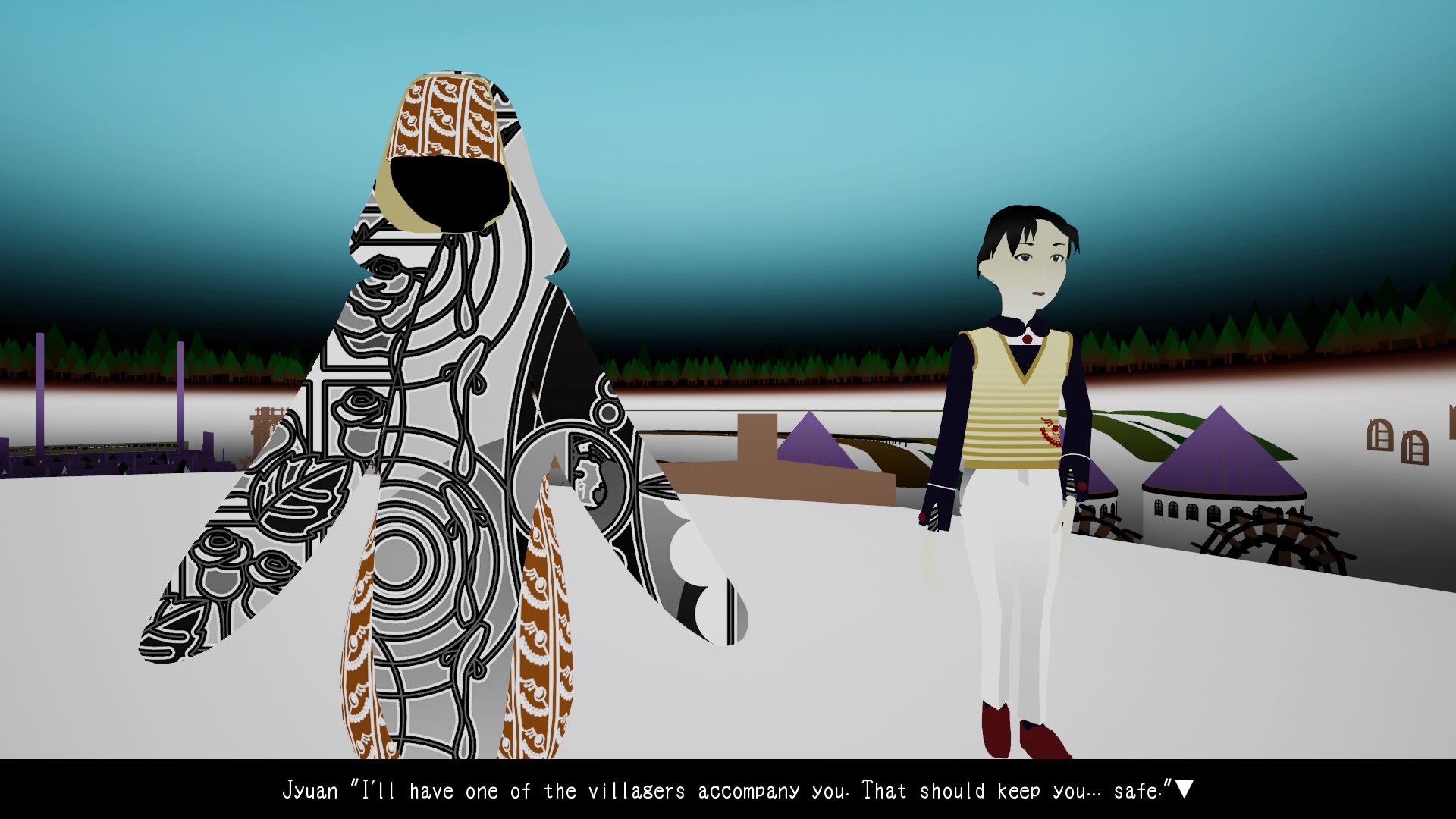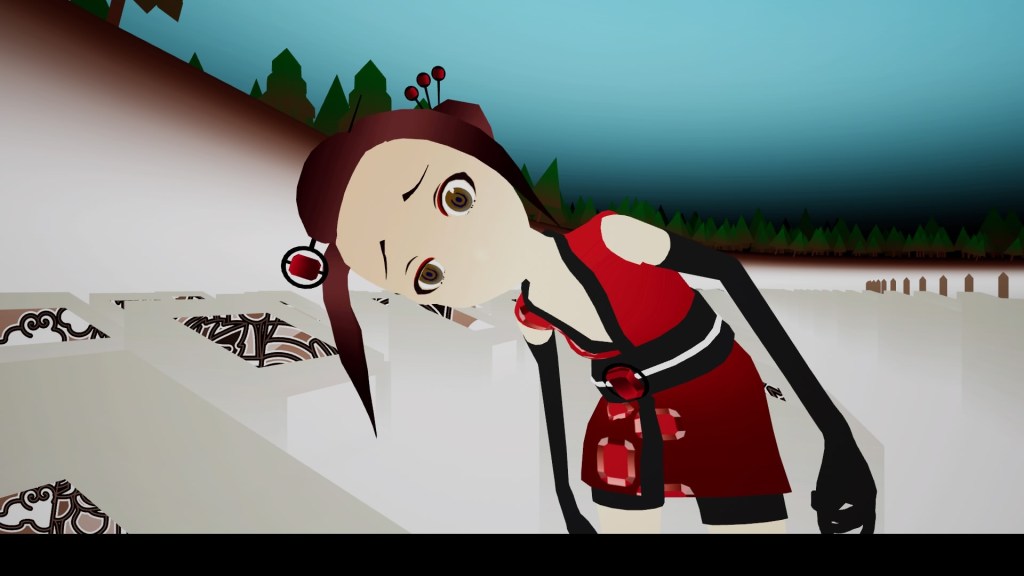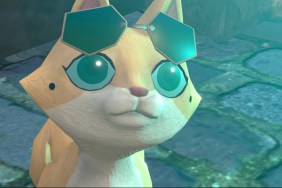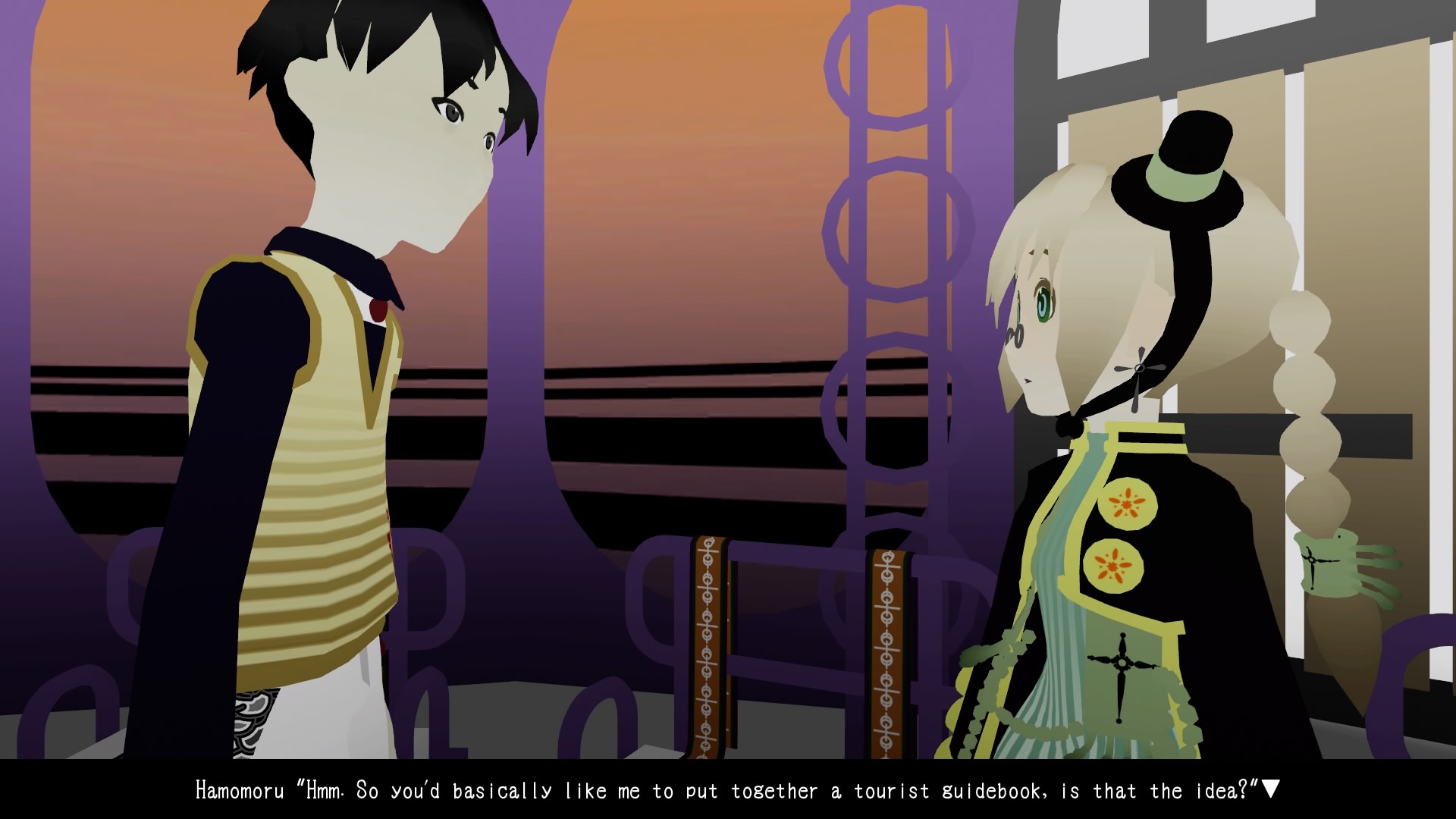
Sometimes, we come across forms of media that can feel as though they are trying to hard to force a feeling or evoke an expression. The desperation is palpable, reducing any chance of tension or genuine introspection. The Midnight Sanctuary is such a game. It is trying so hard to be a reflection of life in a small town, otherworldly, spooky, and surreal that all it ends up being is plodding, detached, somewhat supernatural, and headache-inducing.
There were times when I felt The Midnight Sanctuary was constantly offering commentary on things, but doing so in such a roundabout way that it wouldn’t come out and say exactly what was going on. Much like the artistic rendition of a crane that lurked behind the surface of the entire game, you could see what was going on, but the artistic direction and design choices constantly obscured or frustrated me at every turn. Rather than coming out and saying things or seizing opportunities to be genuinely thrilling, it came across as boring.
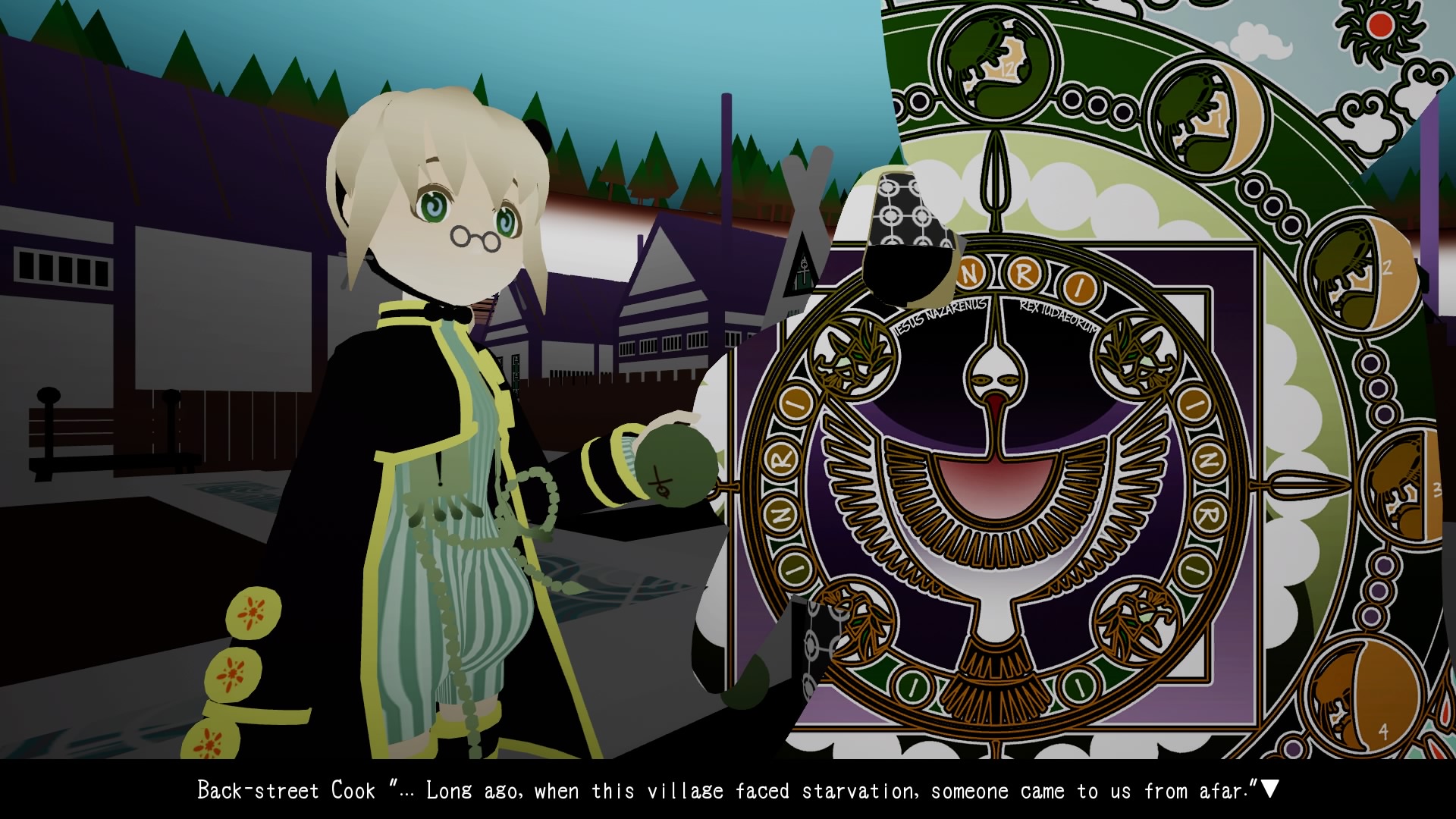
Never Trust Small Towns
The Midnight Sanctuary is a visual novel that can feel more like the story of a town, rather than the people who happen to currently be in it. Hamomoru Tachibana, a young woman, has been invited to Daiusu Village by Jyuan Daiusu, the son of the chief, for reasons. What reasons? Well, first it is to uncover its history. Except then, it turns into creating a tourist guidebook to bring more outsiders there. After that, she becomes part of the modernization committee, tasked with helping construct a theme park with mine cart ride. But then, a supernatural Saint shows up and secrets are revealed, meaning now she has to investigate the otherworldly events, keep an eye on another guest who showed up in town around the same time she did, and find a relic known as the Crane Stone.
And why? What makes Hamomoru so qualified to do any of this? Well, The Midnight Sanctuary never tells the player. It is implied she is maybe some sort of author, but only if you take the time to look at the letter on October 29 Morning from the Status screen. I almost suspected she was some sort of religious figure or nun, since Pastor Kurosu Okada acknowledges her as one of the “faithful,” which is a big deal in this, a village that makes a big deal over building its first real cathedral and being a Christian village. But then, none of the many villagers acted as though she was the Saint, a noted religious figure in the area, but treated Eku, a woman whose name and reason for being there isn’t noted for at least an hour, as though she might be divine.
Anyways, Daiusu is a small, weird town filled with lots of weird people who are mostly friendly, but also friendly in a weird way. Also, The Midnight Sanctuary seems to want you to be scared or put off by it, but doesn’t do a good job of making anything super unsettling. Like even when it flat out tells or shows you things that should be gruesome, it lacks any real punch.
Does Everything Have to Have a Hidden Meaning?
Almost everything in The Midnight Sanctuary seems designed to act as an allusion to something else. Daiusu Village is referred to as “one of Japan’s few true Christian villages.” Yet, whenever we see the villagers worshiping, their actions seem more like members of a cult. The only characters who merit actual models and unique designs are Hamomoru, Jyuan, Kurosu, and Eku. Every NPC is hollow and impersonal, even the one acting as our watcher and guide. They are all transparent, allowing players to look at the crane artwork that is always lurking underneath the surface of the game, suggesting they are interchangeable and have no real importance. Their figures even bleed into one another, becoming one big “mob” if many are onscreen at once. The only way you can tell them apart is by the bandanas over their heads.
The Midnight Sanctuary also plays heavy and loose with metaphors. The Crane Wife, a figure who came to Daiusu Village, could be seen as one. Her heirloom, the Crane Stone Hairpin, is another. The game can have you spending about an hour or two half figuring out what each of these things might really be, taking its time and drawing out the reveal. Which would be fine, if the game was good about keeping someone interested. However, I found the attempt to be so surreal, the artistic choices so distracting, and the characters so thinly created that I never felt invested in the adventure. The game was trying so hard to be obtuse, it did not put any effort into making anyone likable until I was about three hours into it. By that point, it was too late to make me care.
Religion, Faith, and Mythology
While The Midnight Sanctuary makes a big point of the game being set in a Christian village, complete with a Maria statue people visit and confess to, a penchant for miracles, and a “Saint” that straight up visits the town, it never actually gets heavily into religion. Even Kurosu, the priest, spends a lot of the game acknowledging that the religion being practiced there is very different than what is going on in other areas and is suffering from a serious crisis of faith.
Rather, it is that very faith that comes into play quite a bit. It is one of the few story elements that The Midnight Sanctuary handles well. Hamomoru is constantly described as one of the “faithful” who believes, and we are rewarded by getting to see things from her perspective as events occur. Both before and after the Saint appears, we get to see the impact faith has on the villagers and how different groups of people’s attitudes and outlooks change, depending on their current status and the Saint’s actions. We see the effect all of this has on people who do not hold that sort of faith, and the things they are willing do do because they are faithless.
The other element The Midnight Sanctuary handles well is mythology. In fact, I would go so far as to say it is the one redeeming element of the story that made me want to complete the game. Hamomoru’s initial task involves finding out about the different stories passed down throughout the village. One is the religious story about the Saint. A woman came to town and became a revered Guest. She was welcomed, since so few people came to Daiusu. Even better, when people were starving, she was able to feed them. Hamomoru compares it to the Biblical story of Jesus using two fish and five loaves of bread to feed the masses. But then, she also hears the myth of the crane wife. A villager saved a crane while out hunting. The next day, a beautiful woman came to town. He married her. However, when ventured out one day alone, he followed her and discovered she was the crane. She disappeared and never returned. A third tale speaks about a strange woman who married a horse, then became a stone. Her investigation of these three tales and the actual history that inspired them is very well done and is a display of how such legends came to be in the real world.
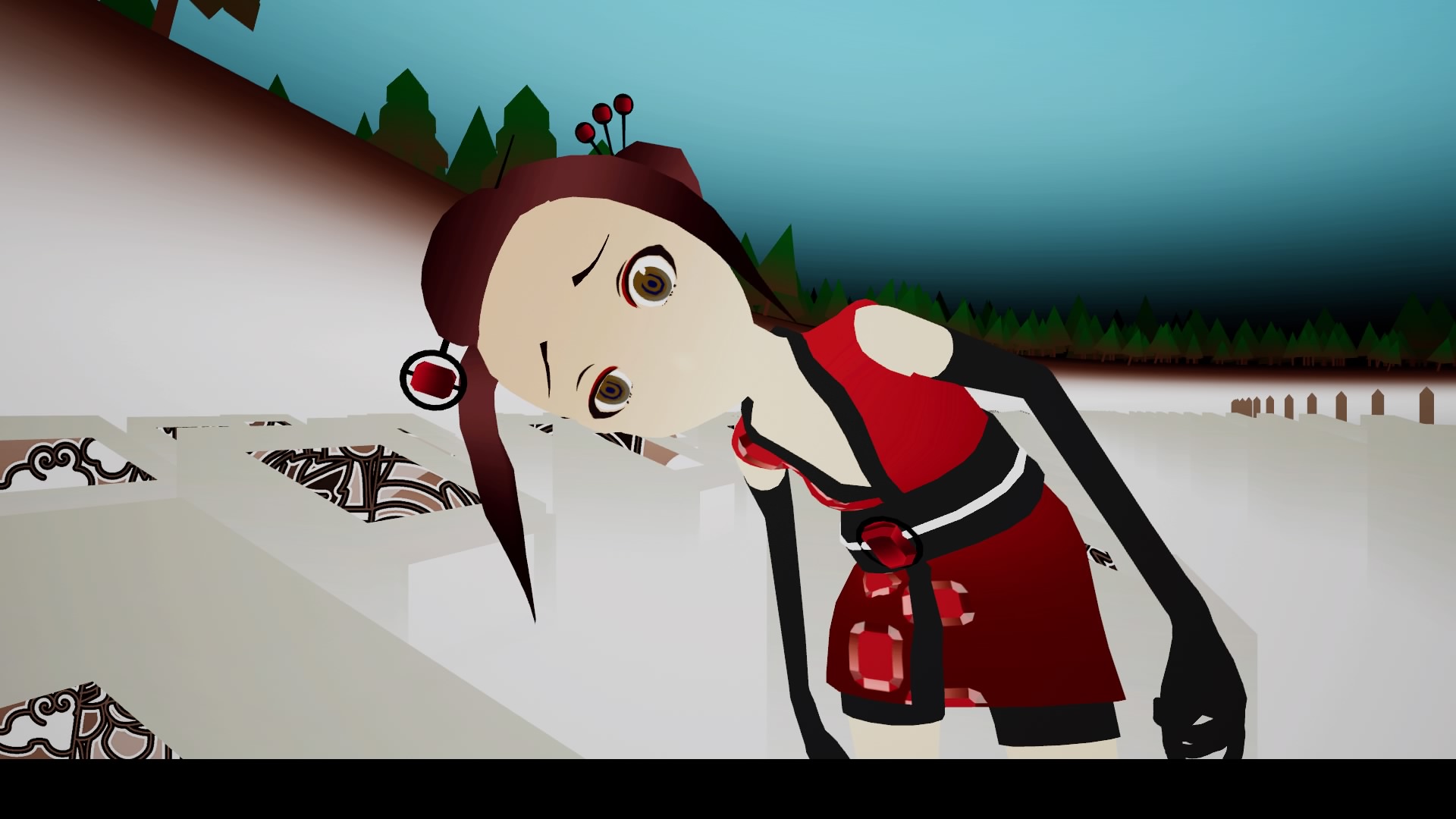
Odd Design Choices
The Midnight Sanctuary is a visual novel that also seems to want to be an adventure game. It can often offer the illusion of choice, but without actually giving you any real influence over its direction. It does have some good voice acting and the localization is good, but that suffers when the characters are not well developed and the story plods along. It also lacks some of the features one would expect from such a game, like an opportunity to skip through text. There are some story segments where it is hard to sit through, because it can feel like nothing of consequence is happening. Then, when you do have moments that should make a big impression on you and leave you perhaps shocked and disturbed about what is going on, such as a reveal of a major town secret, it left me going, “Huh. Sure.” The timing is all off and the connection is not there.
I feel like part of this is because of the effort to be so surreal. Except instead of The Midnight Sanctuary using this effect, where parts of the foreground and its people are cut out so you can see the crane picture in the background, in a way that is tactful, it is disorienting. There were scenes that gave me a headache, because the viewpoint is constantly shifting, the hollow NPC bodies were constantly moving about in an attempt to have a bizarre, perhaps psychedelic dance, and I wished it had English voice acting so I could shut my eyes and listen to what was going on, rather than have the odd forced perspectives thrust upon me.
I was thankful that PlayStation VR support was not available in the version I reviewed, because if it was this bad watching things play out on a TV screen in front of me, I can not imagine what it would be like in VR. But then, the font was so small that I did have to sit within ten inches of my TV, so maybe that had something to do with it? (Also, this is a bad idea for a visual novel game with only Japanese voice acting. Can we please enter an era where developers allow us to change the font size?)
When The Midnight Sanctuary was not hard to look at because of the design choices, it was because it was just plain hard to see things on the screen. If a story segment is happening at night, you are not going to be able to see what is going on. Go ahead and crank up the settings on your TV, but it won’t matter. The Daiusu hot springs features all of your favorite shades of black, from ebony to onyx. This are sometimes not much better during the day. If you happen to visit the graveyard, be prepared to see eggshell gravestones, cream plagues on the gravestones, ivory city walls, and baby powder-colored ground. A polar bear could have been hidden in the background as an Easter egg, and I wouldn’t have caught it.
There is no doubt in my mind The Midnight Sanctuary will find an audience. Fans of CAVYHOUSE and Carpe Fulgur may give it a chance out of loyalty and visual novel aficionados may pick it up out of curiosity. This is not a game for a more general audience. Hell, I have been playing visual novels since before they became popular in the west, and I had trouble sticking with it. Lots of strange choices were made in this game, and all of them made it more difficult for me to connect with the story and its characters. I imagine others will feel similarly. But hey, people who enjoy constantly shifting and awkward camera angles, a storyline that takes about an hour and a half to really start getting good, and playing peek-a-boo with a stylized crane will definitely dig it.
The Midnight Sanctuary review code provided by UNTIES. Version 1.00 reviewed on a PlayStation 4. For more information on scoring please see our Review Policy here.
-
It offers an interesting look at how religious and mythological stories can be based on historical events.
-
It explores the impact faith can have on people's behaviors.
-
Characters receive little to no development.
-
The story has poor pacing.
-
The art direction can be difficult to look at.
-
The camera can't seem to stick with one angle.
-
Visiting locations offers the illusion of choice.
-
The font for the text is very small, which is bad since there is only Japanese voice acting and you kind of need to be able to read it to understand what is going on.
The Midnight Sanctuary Review
Gallery of screenshots from The Midnight Sanctuary.
-
The Midnight Sanctuary_20180928172454
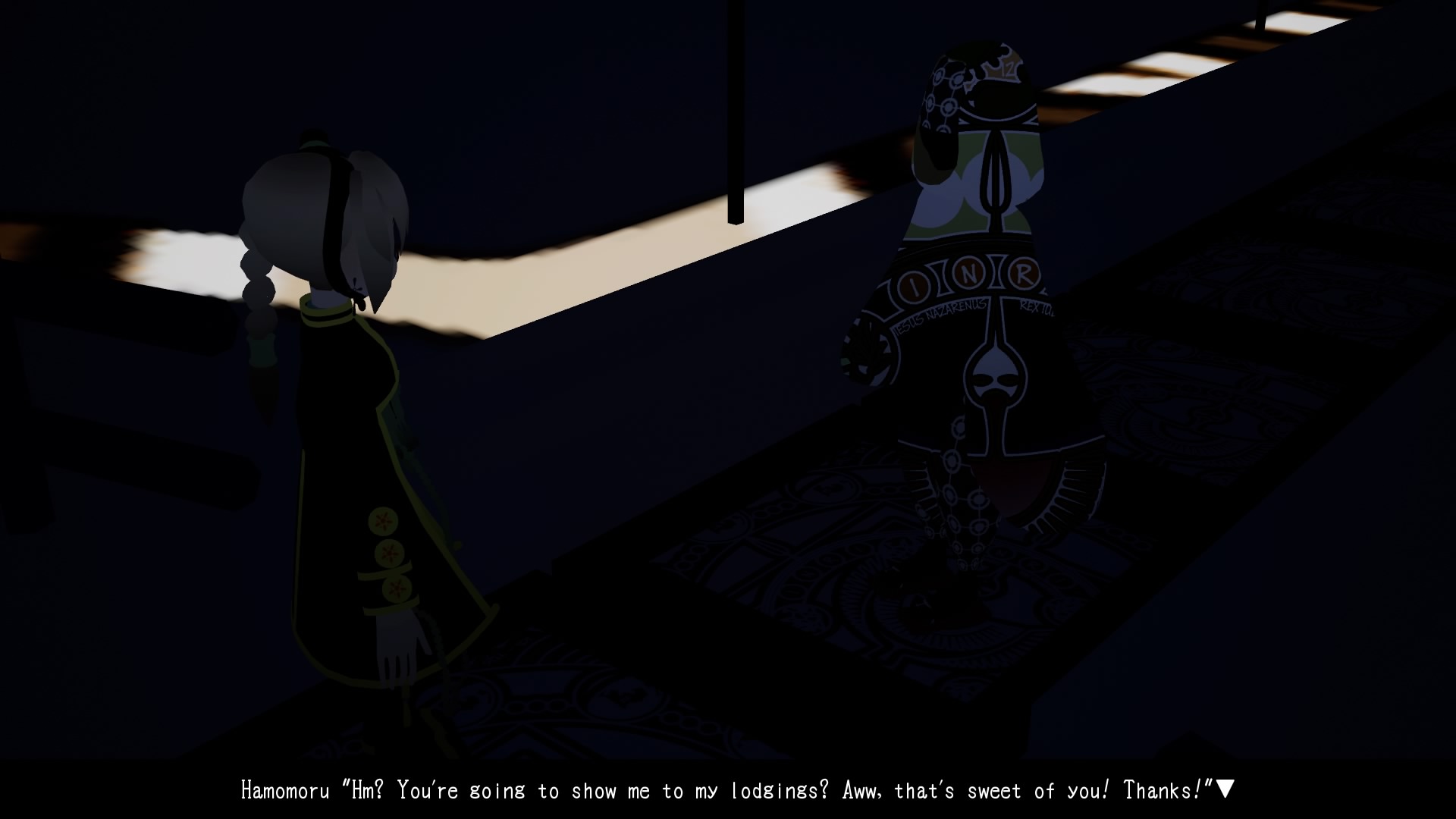
-
The Midnight Sanctuary_20180928172803
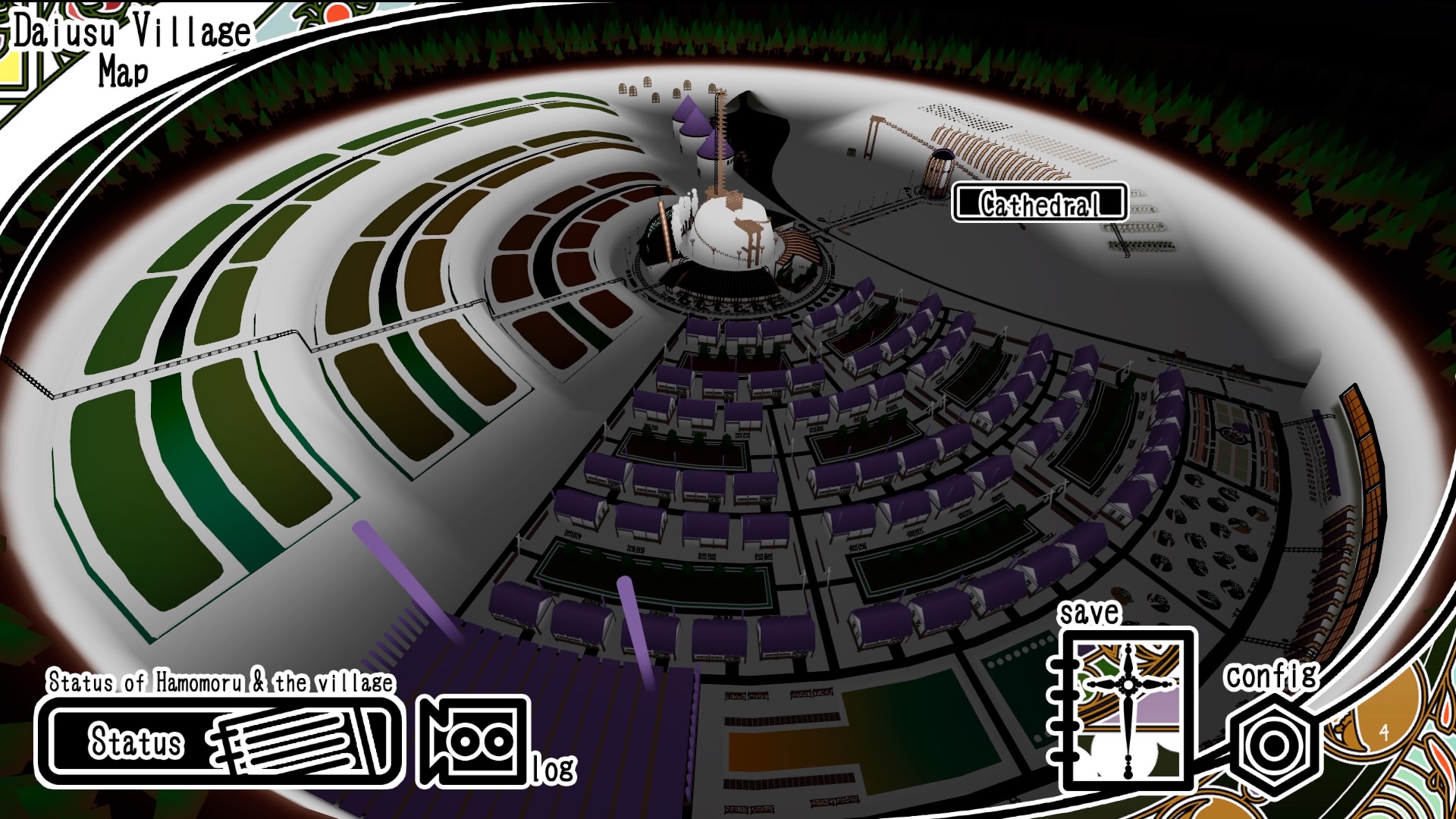
-
The Midnight Sanctuary_20180928172810
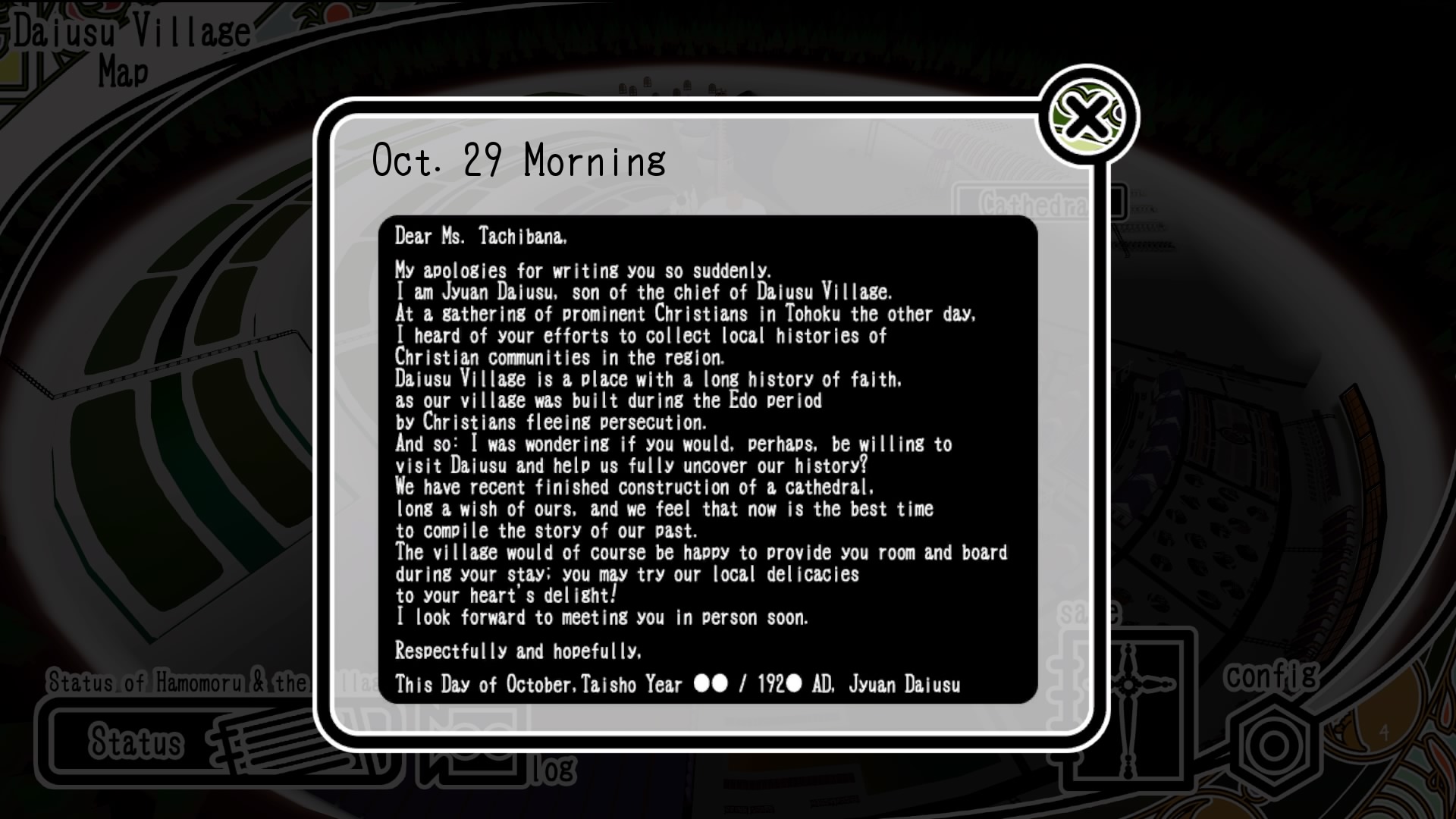
-
The Midnight Sanctuary_20180928172920
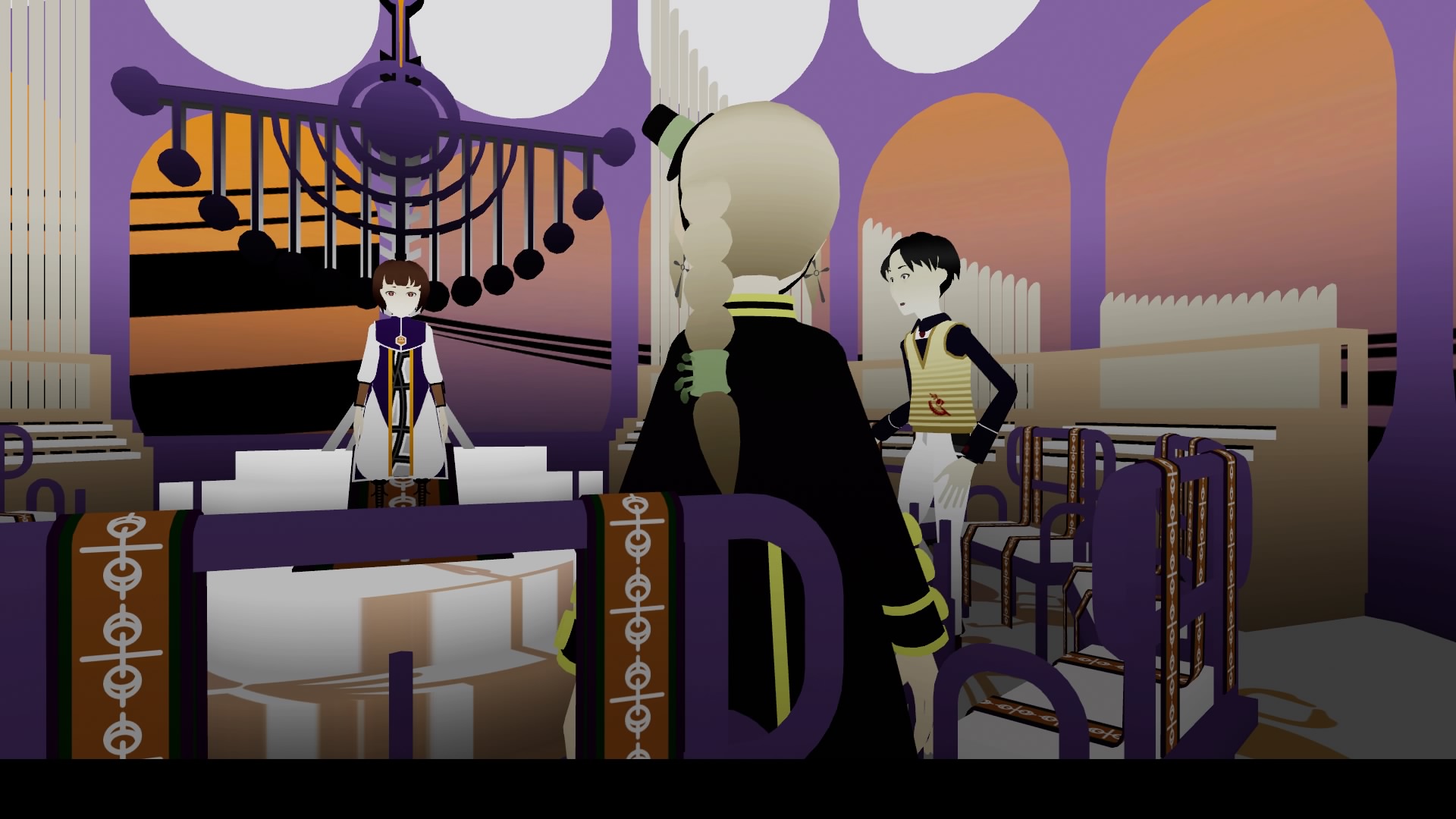
-
The Midnight Sanctuary_20180928173002
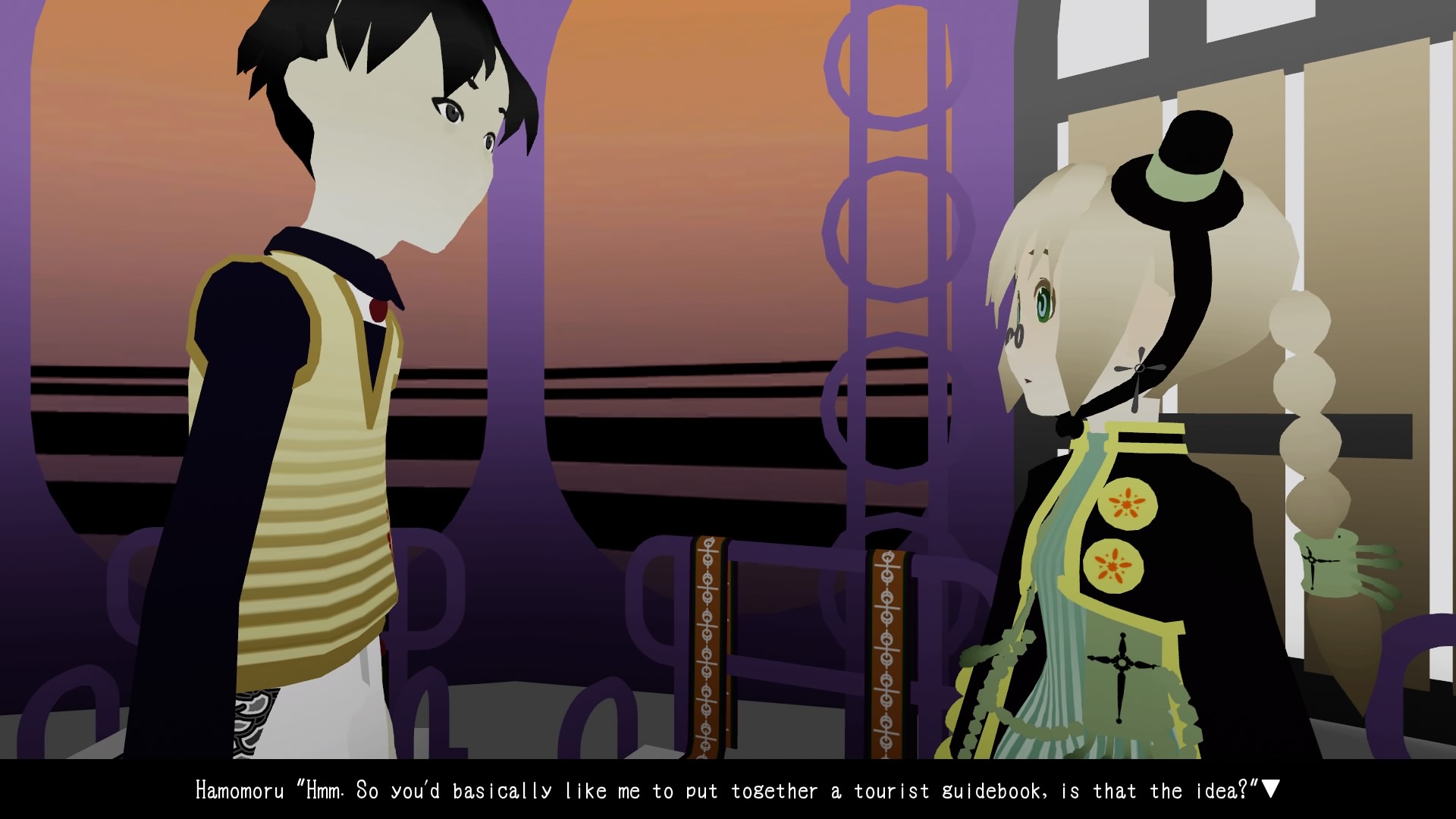
-
The Midnight Sanctuary_20180928173149
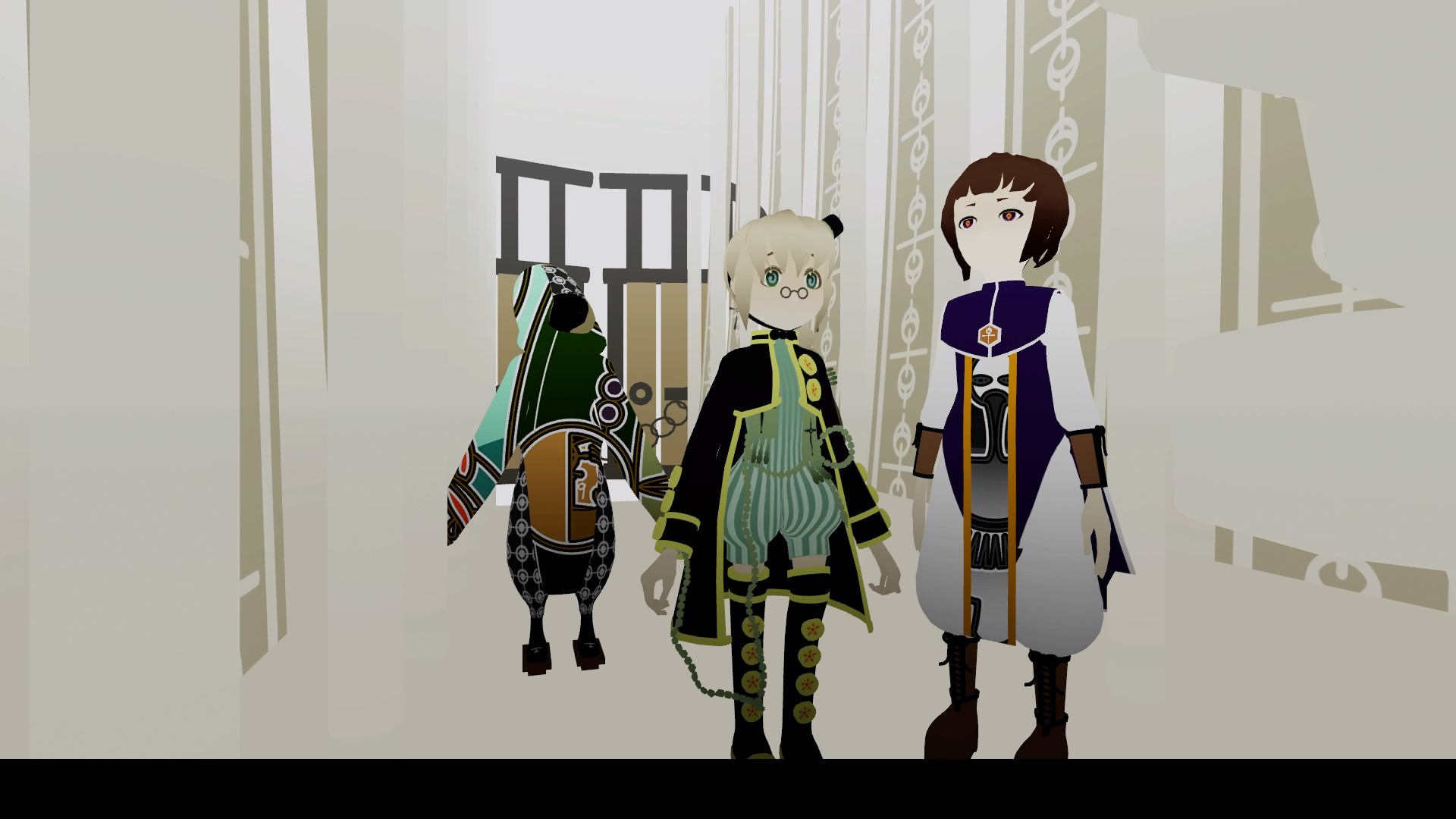
-
The Midnight Sanctuary_20180928173202
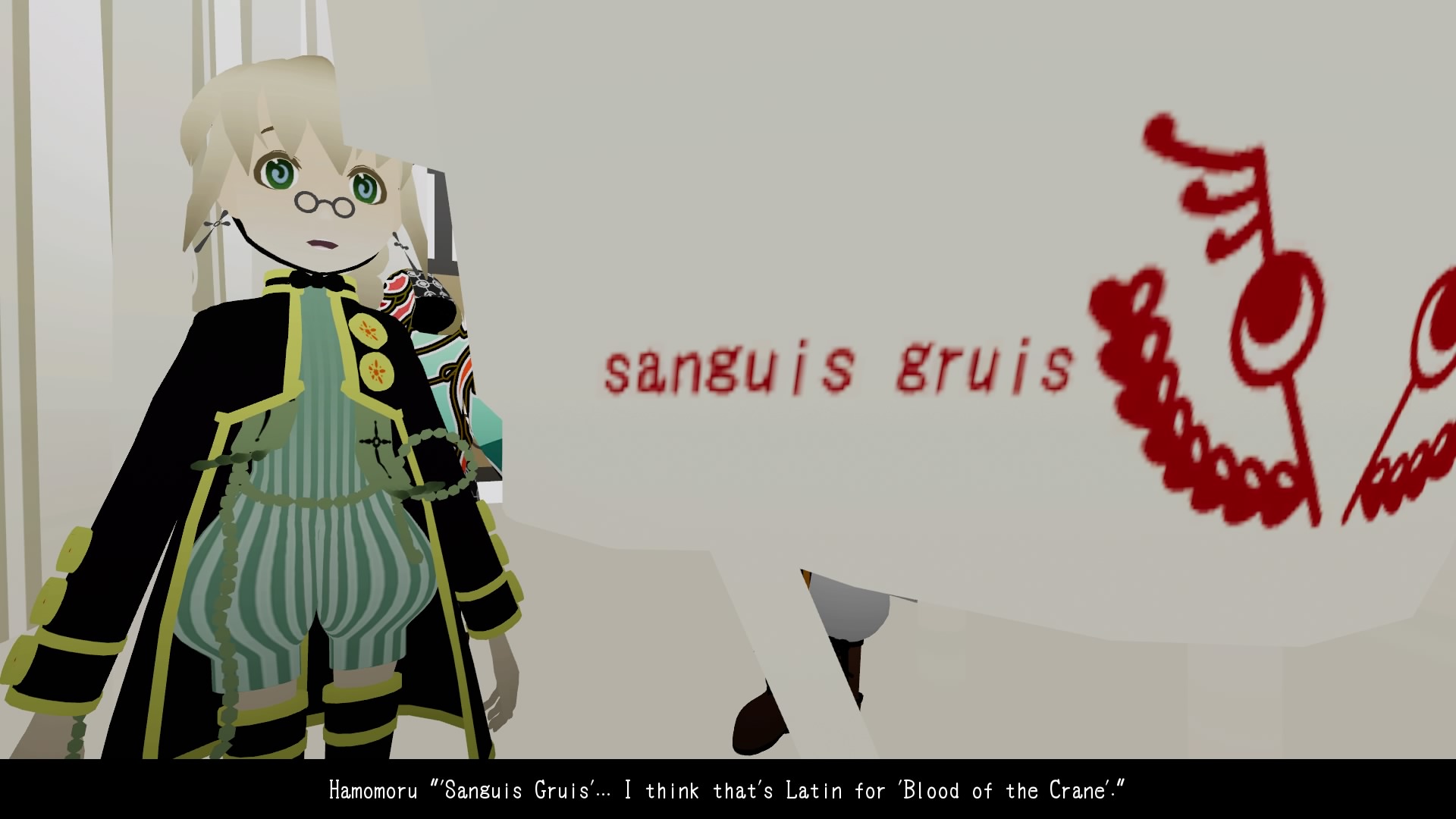
-
The Midnight Sanctuary_20180928173537
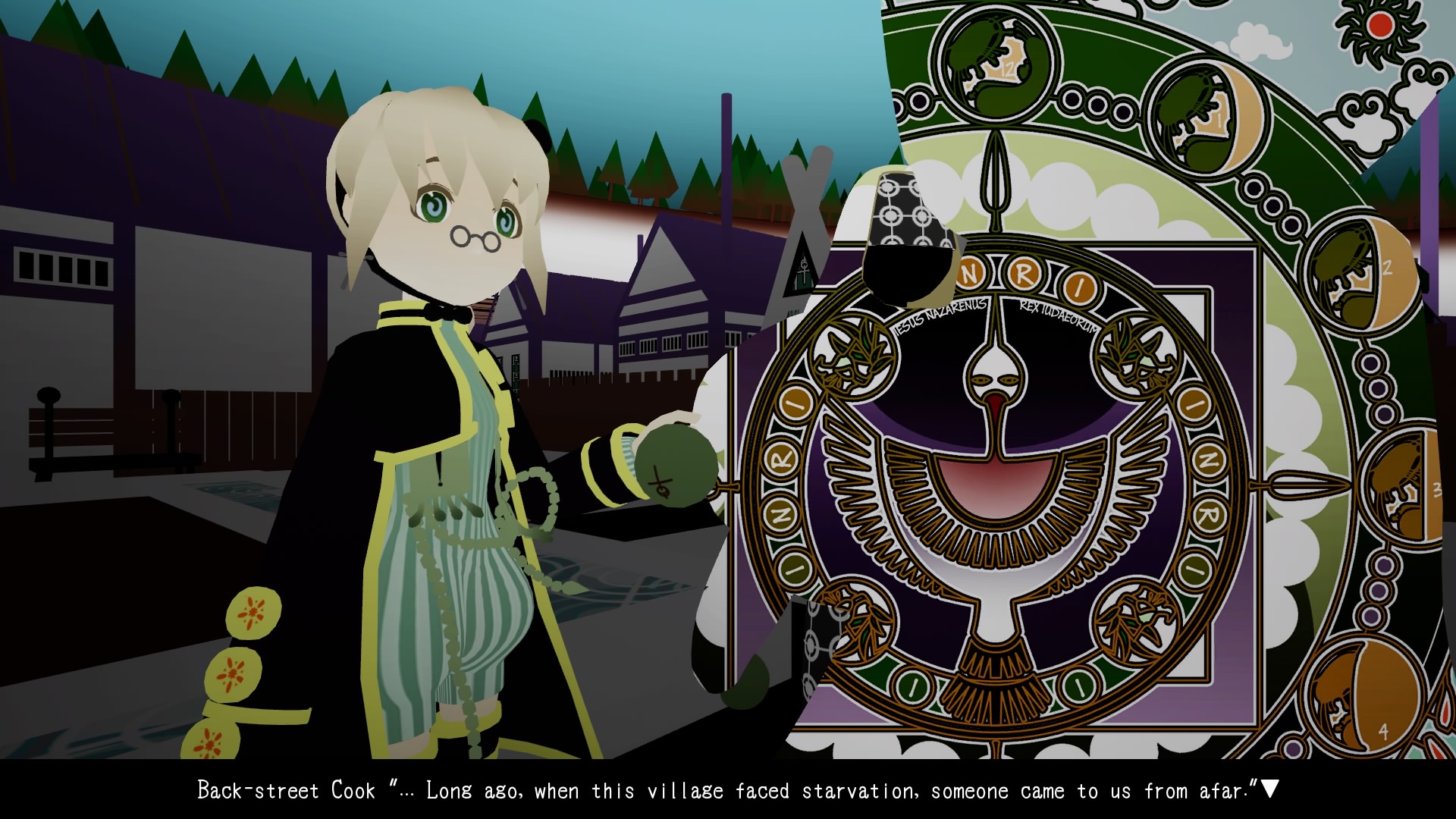
-
The Midnight Sanctuary_20180928173953
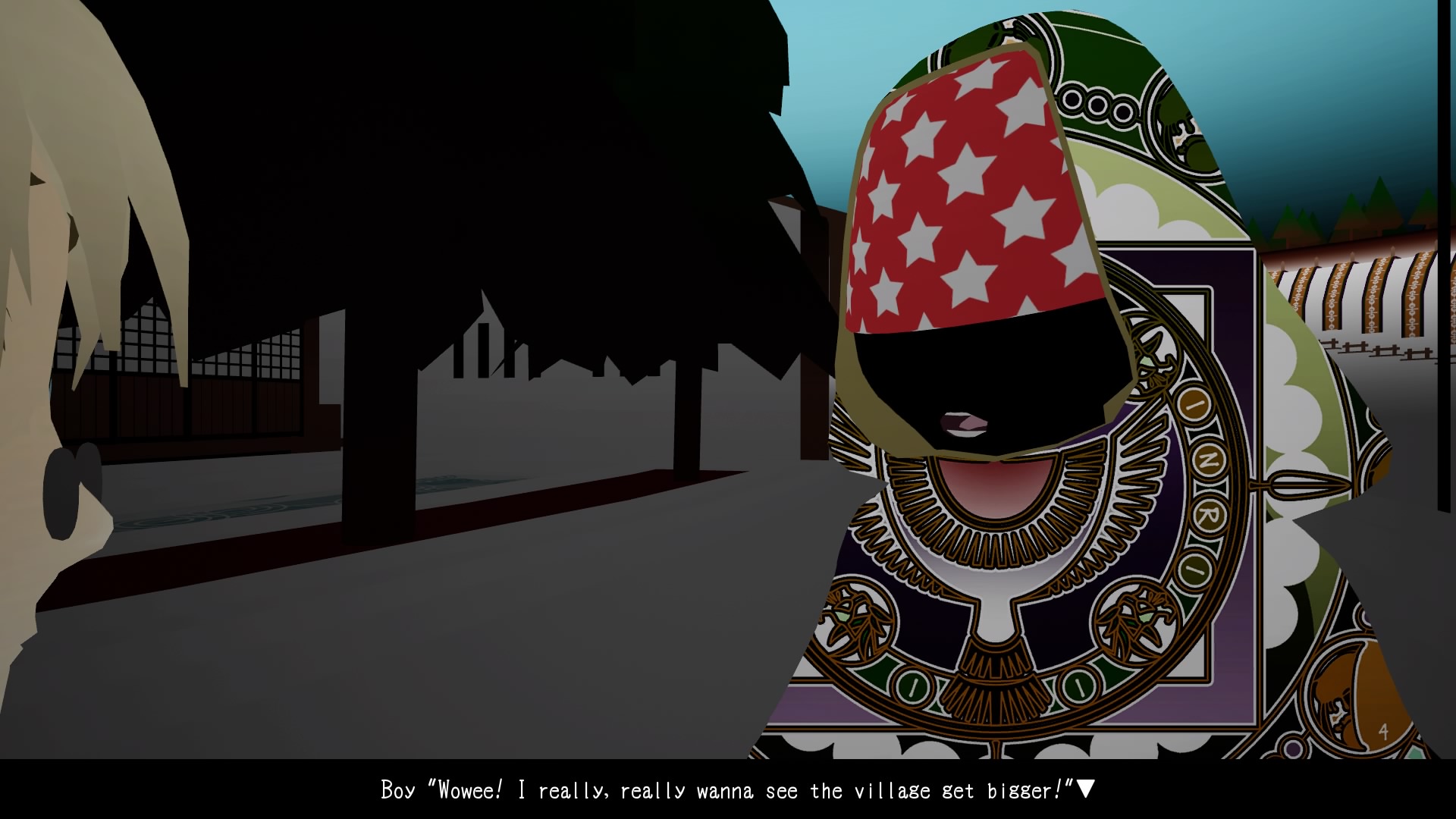
-
The Midnight Sanctuary_20180928174105
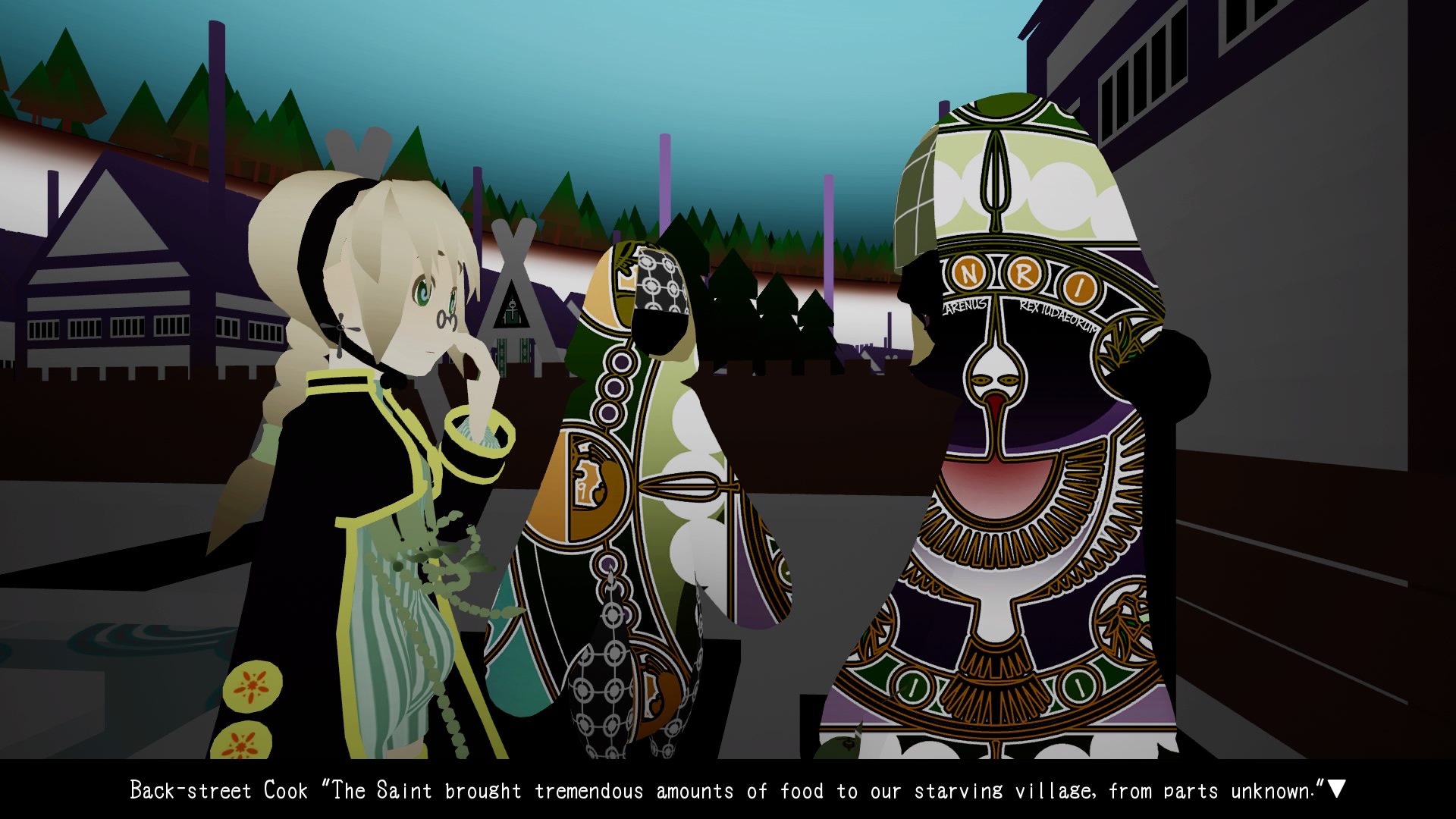
-
The Midnight Sanctuary_20180928174209
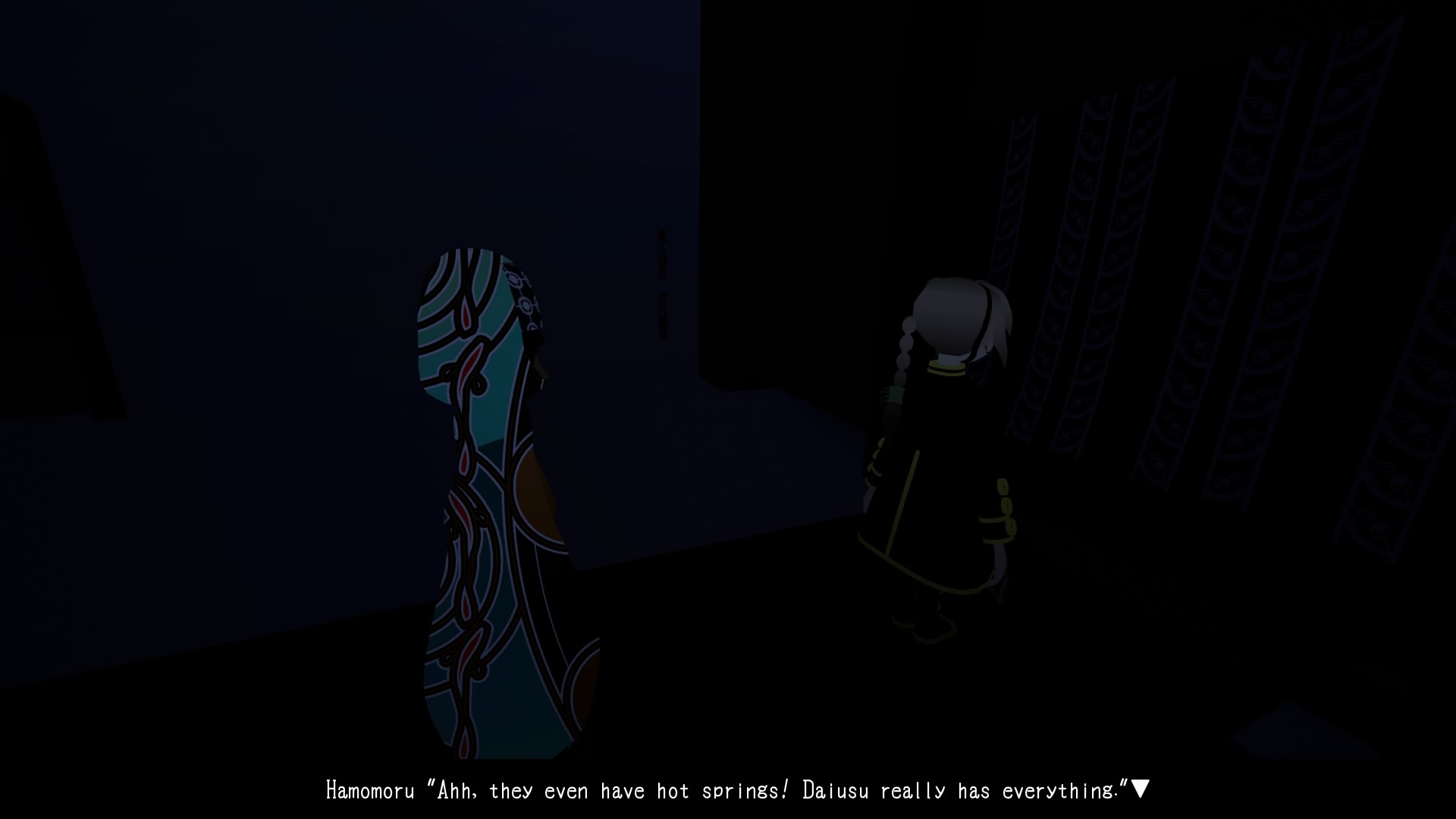
-
The Midnight Sanctuary_20180928174232
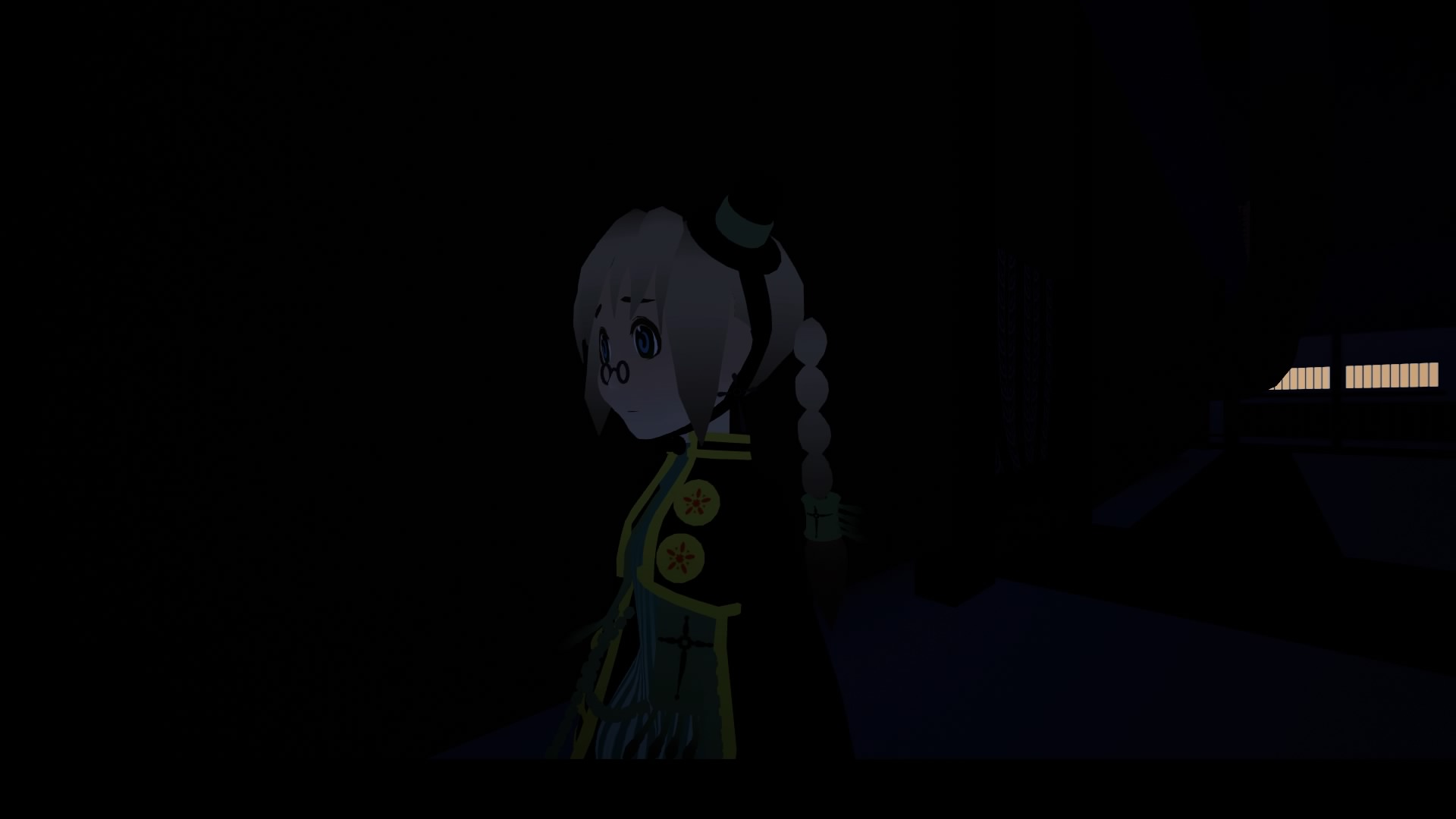
-
The Midnight Sanctuary_20180928174251
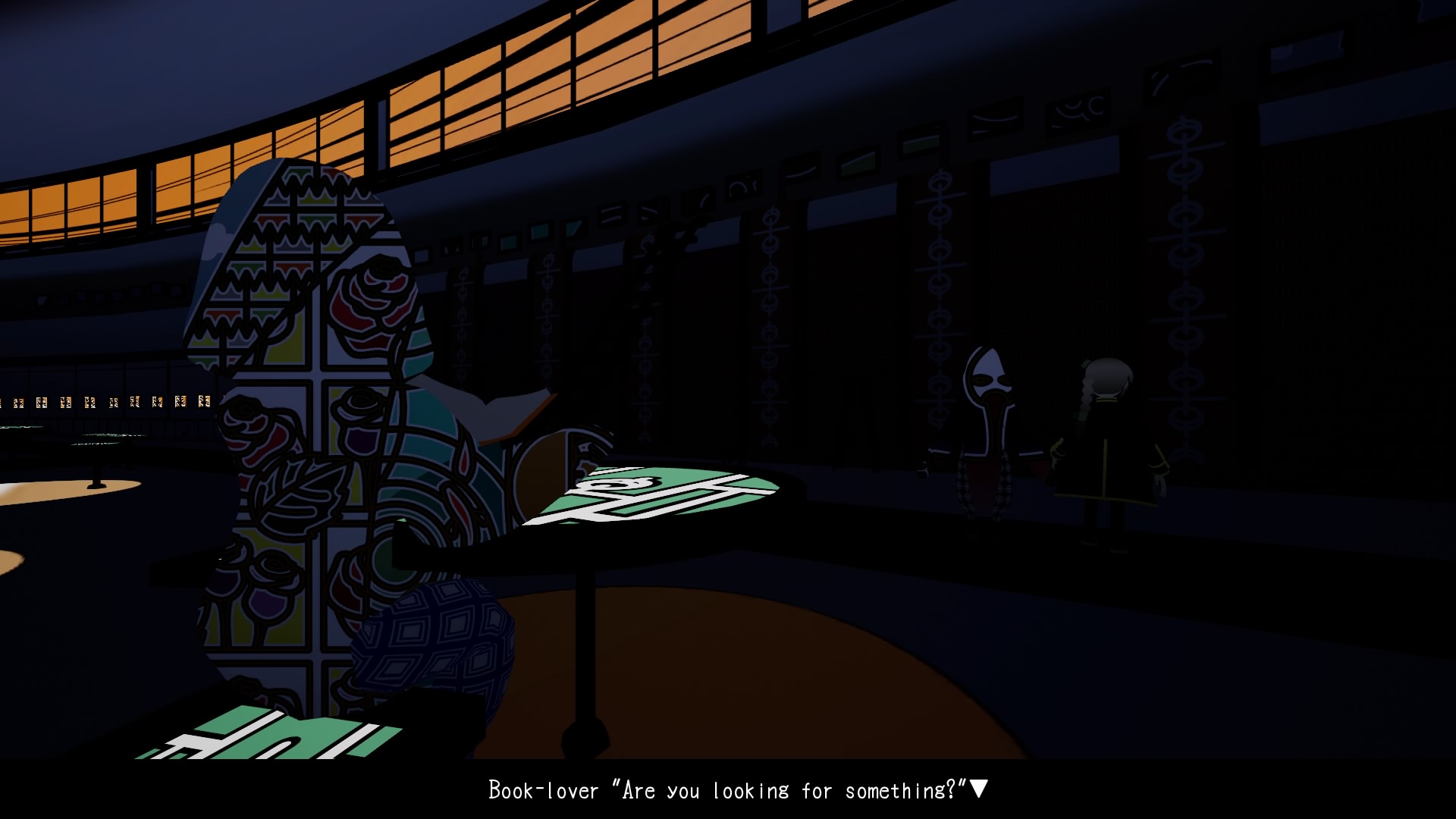
-
The Midnight Sanctuary_20180928174501
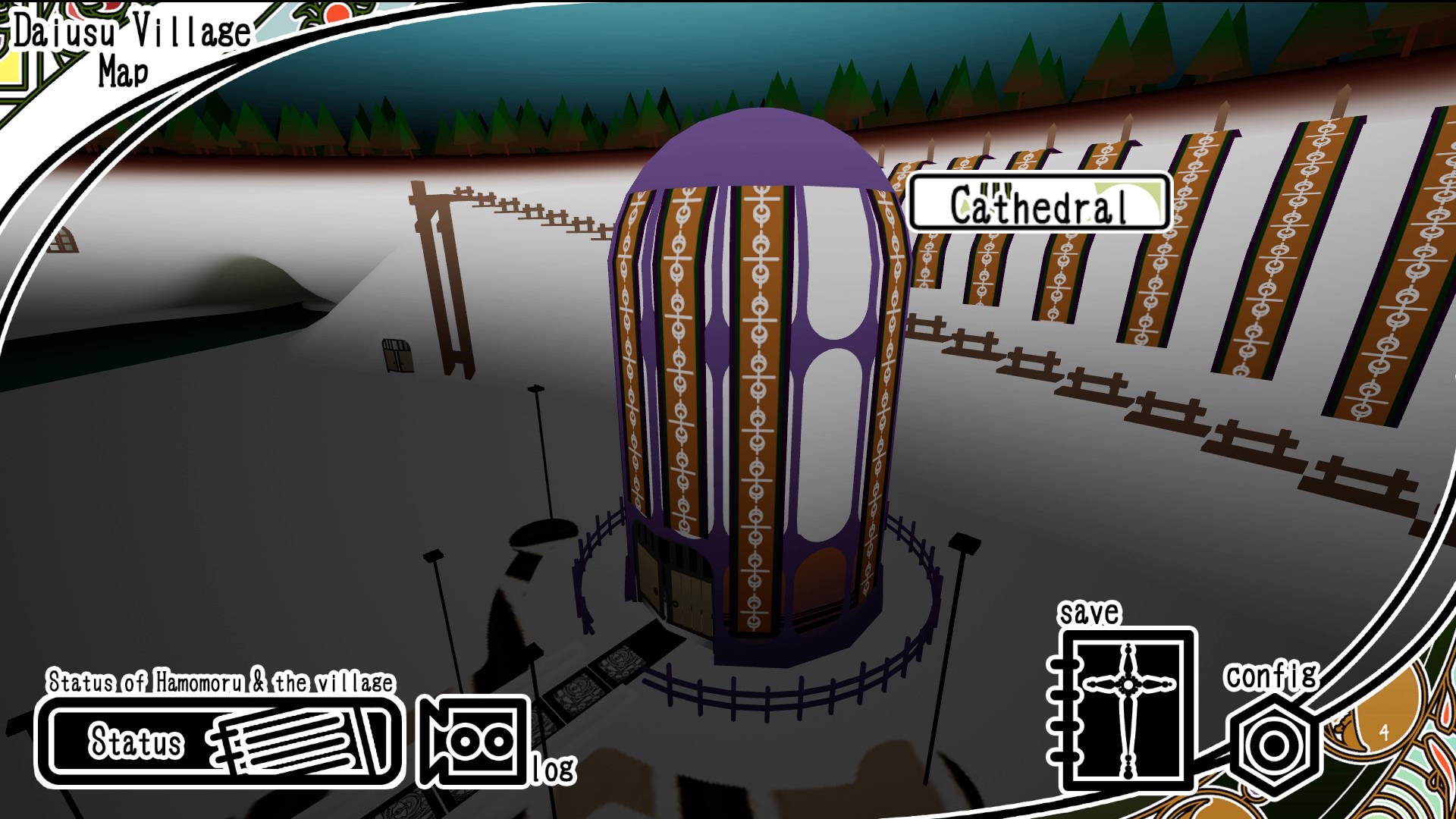
-
The Midnight Sanctuary_20180928174510
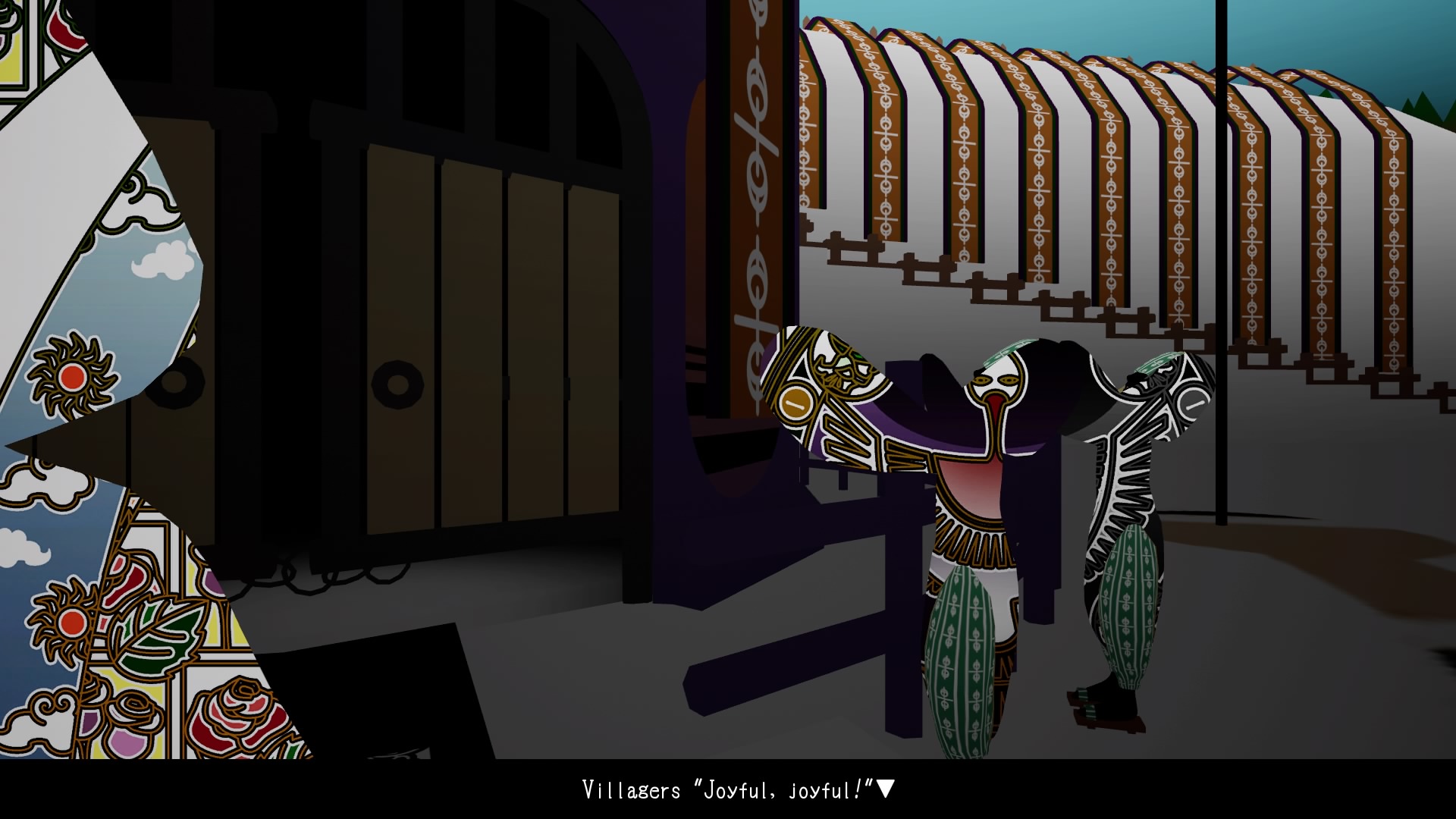
-
The Midnight Sanctuary_20180928174538
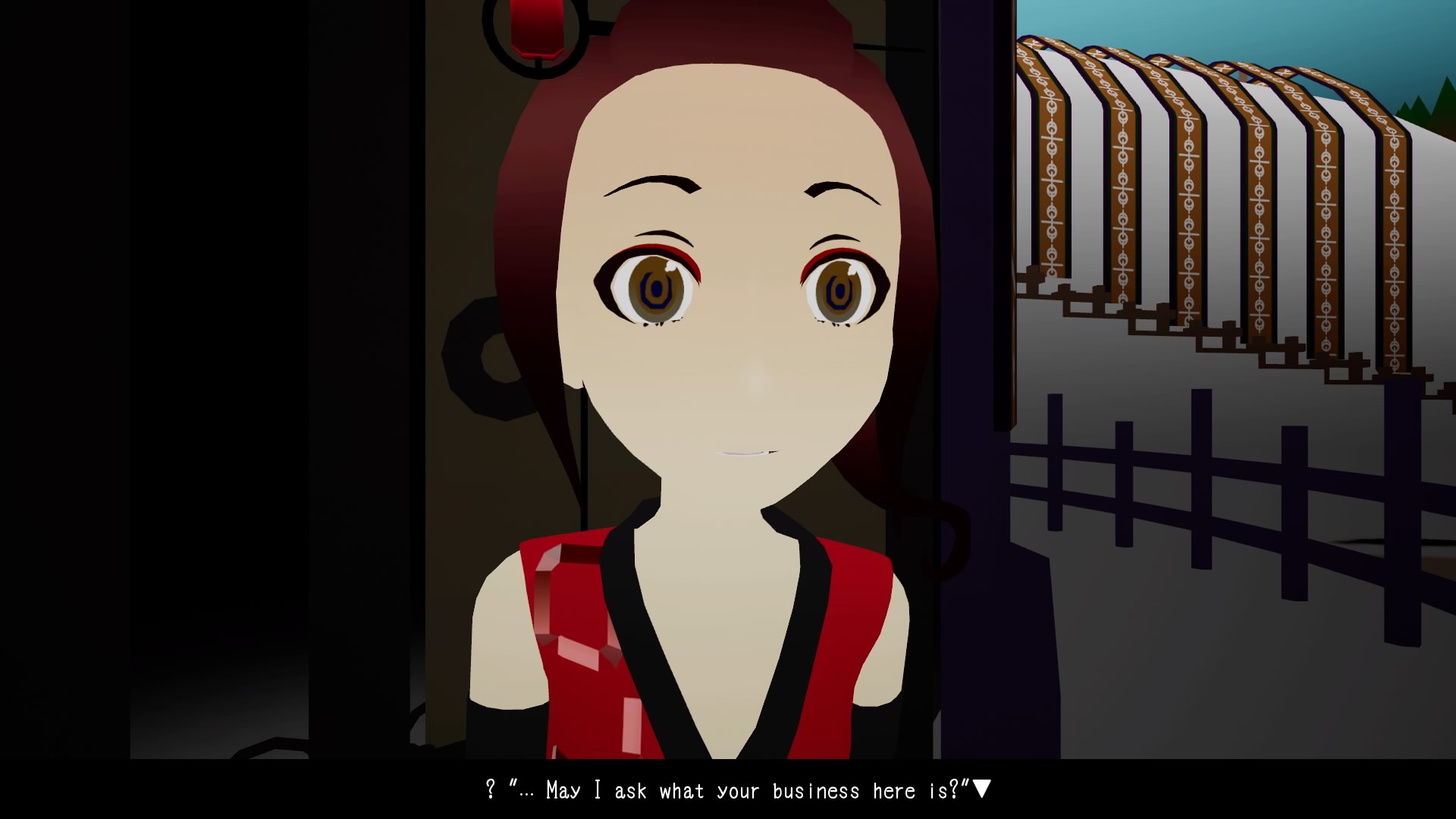
-
The Midnight Sanctuary_20180928174807
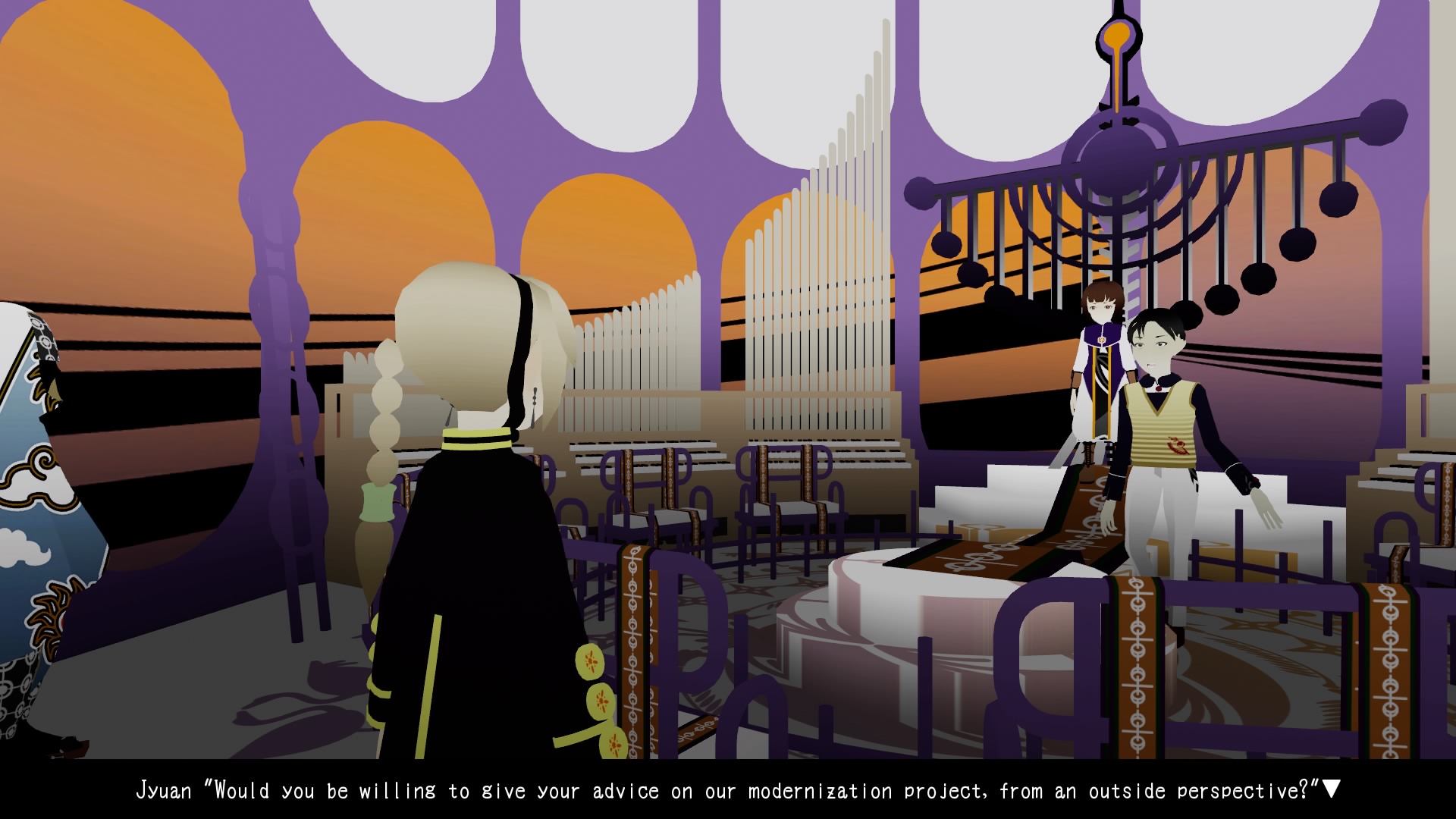
-
The Midnight Sanctuary_20180928174915
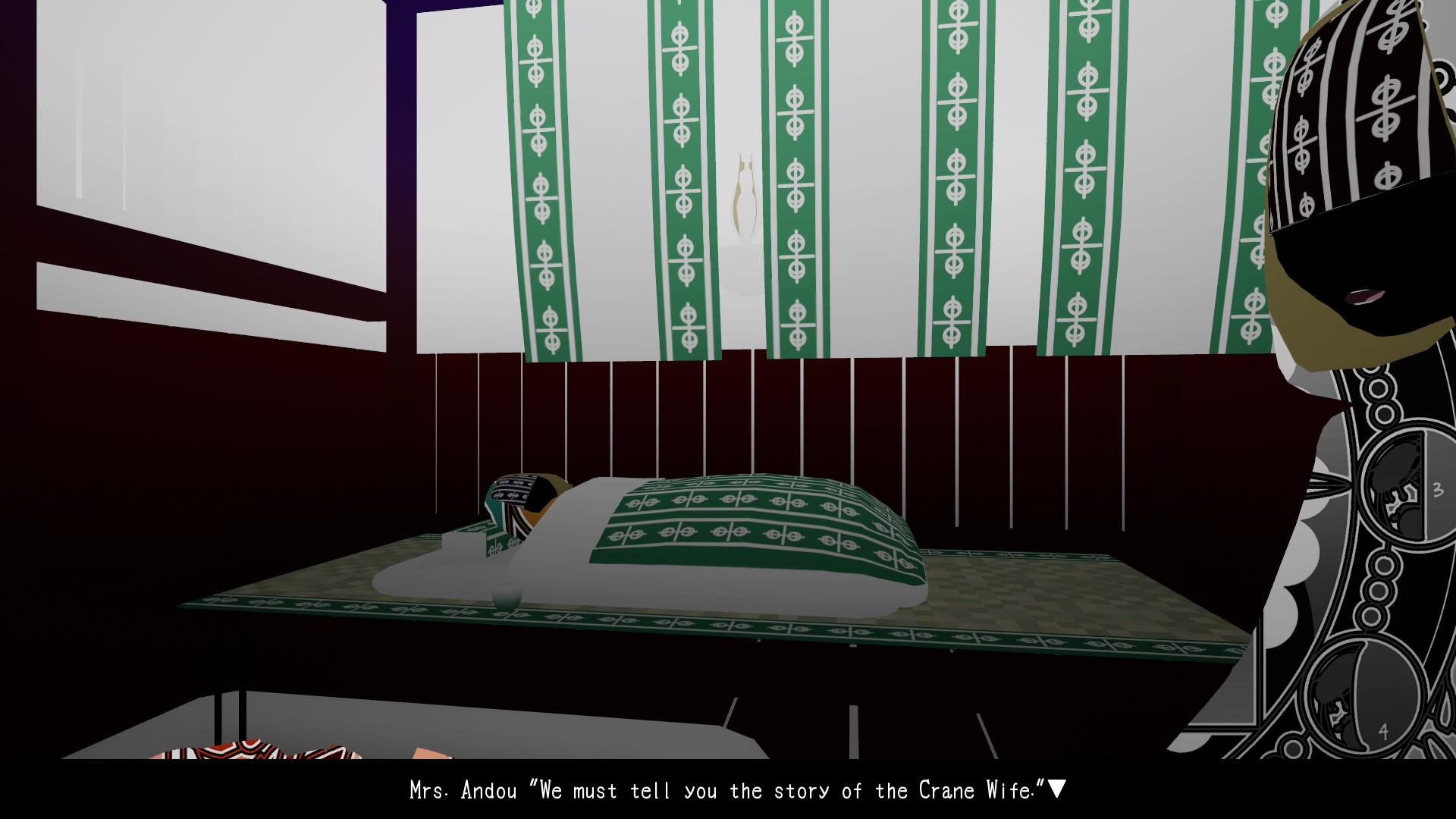
-
The Midnight Sanctuary_20180928175220
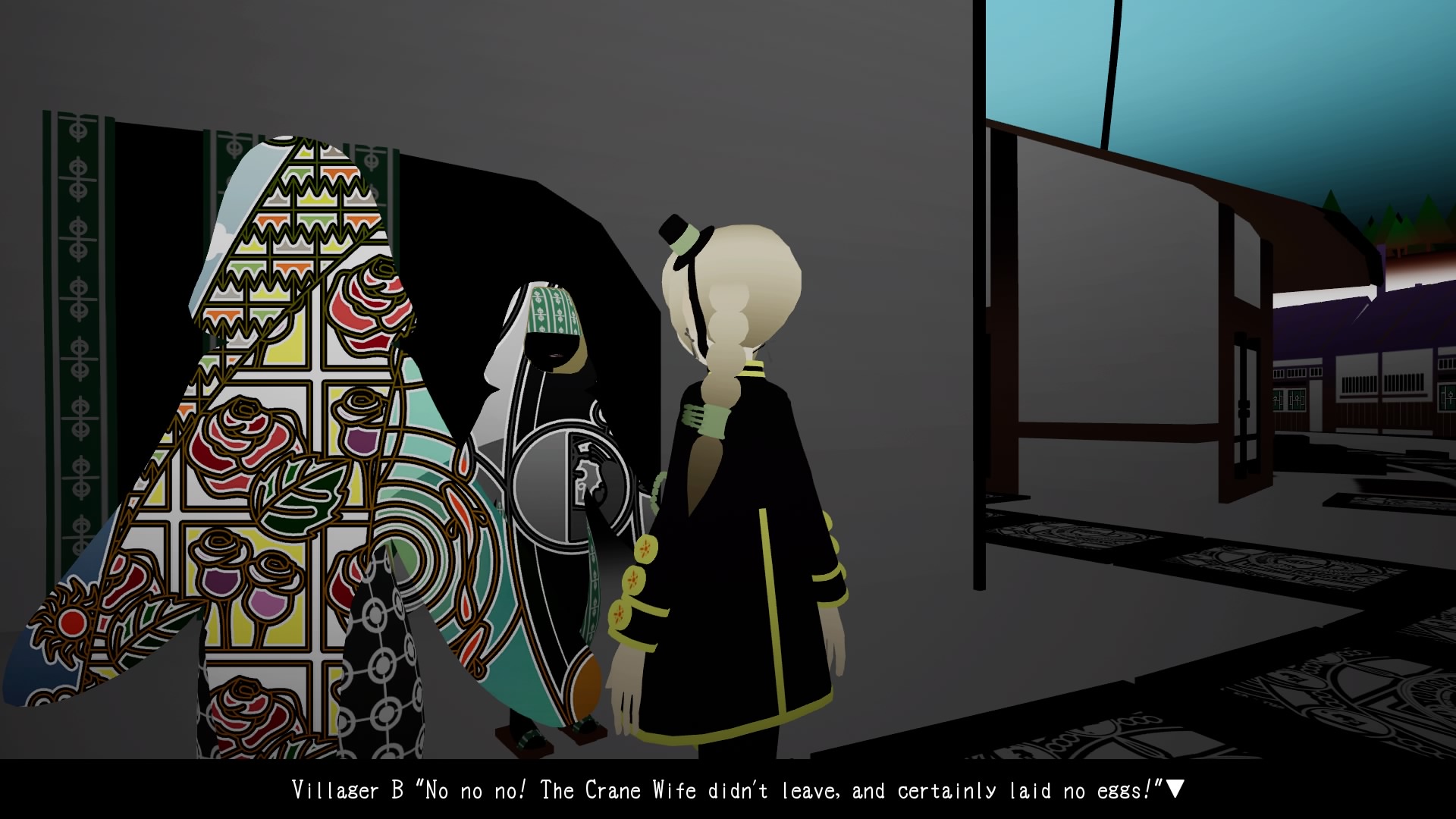
-
The Midnight Sanctuary_20180928175728
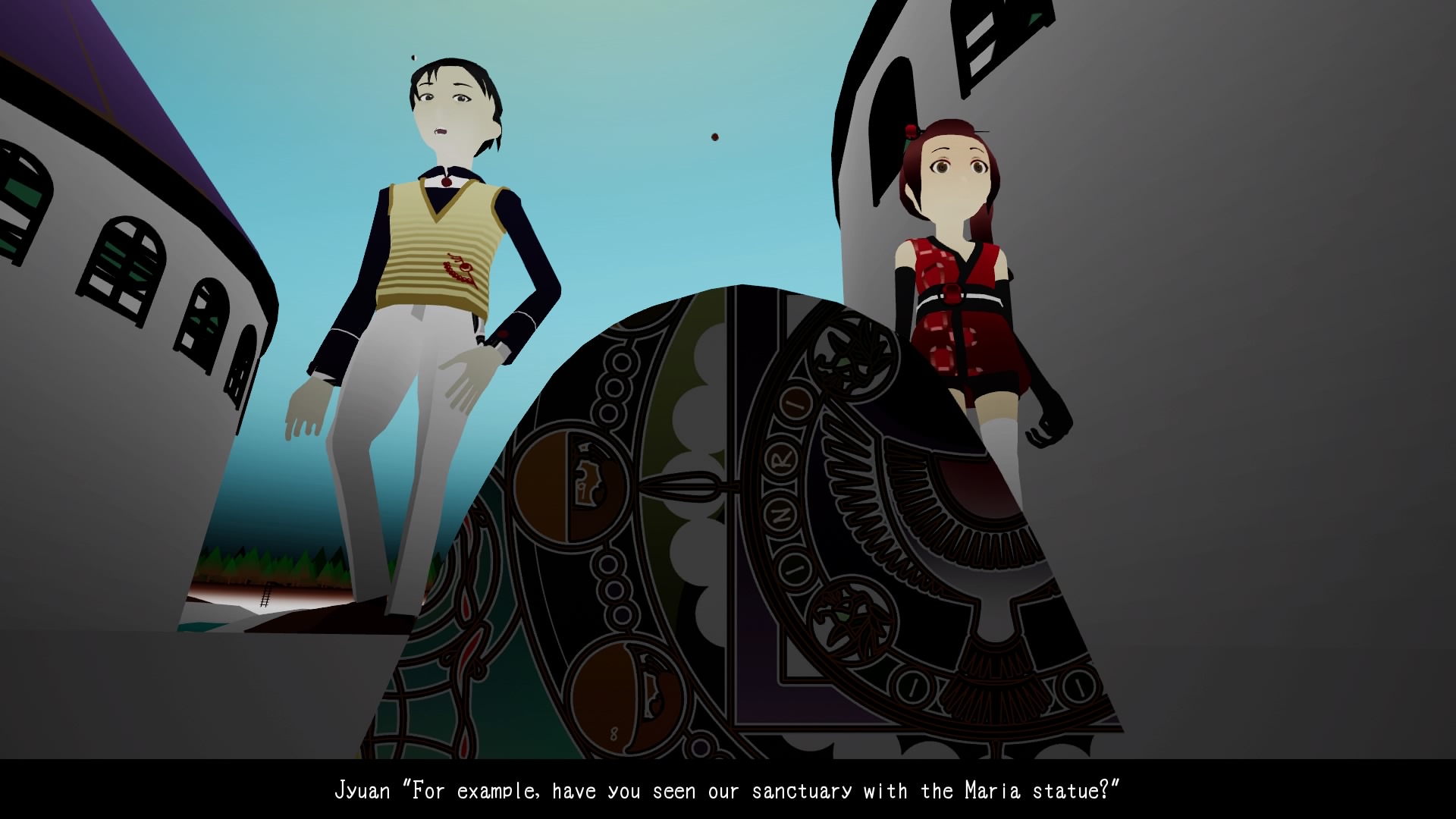
-
The Midnight Sanctuary_20180928175833
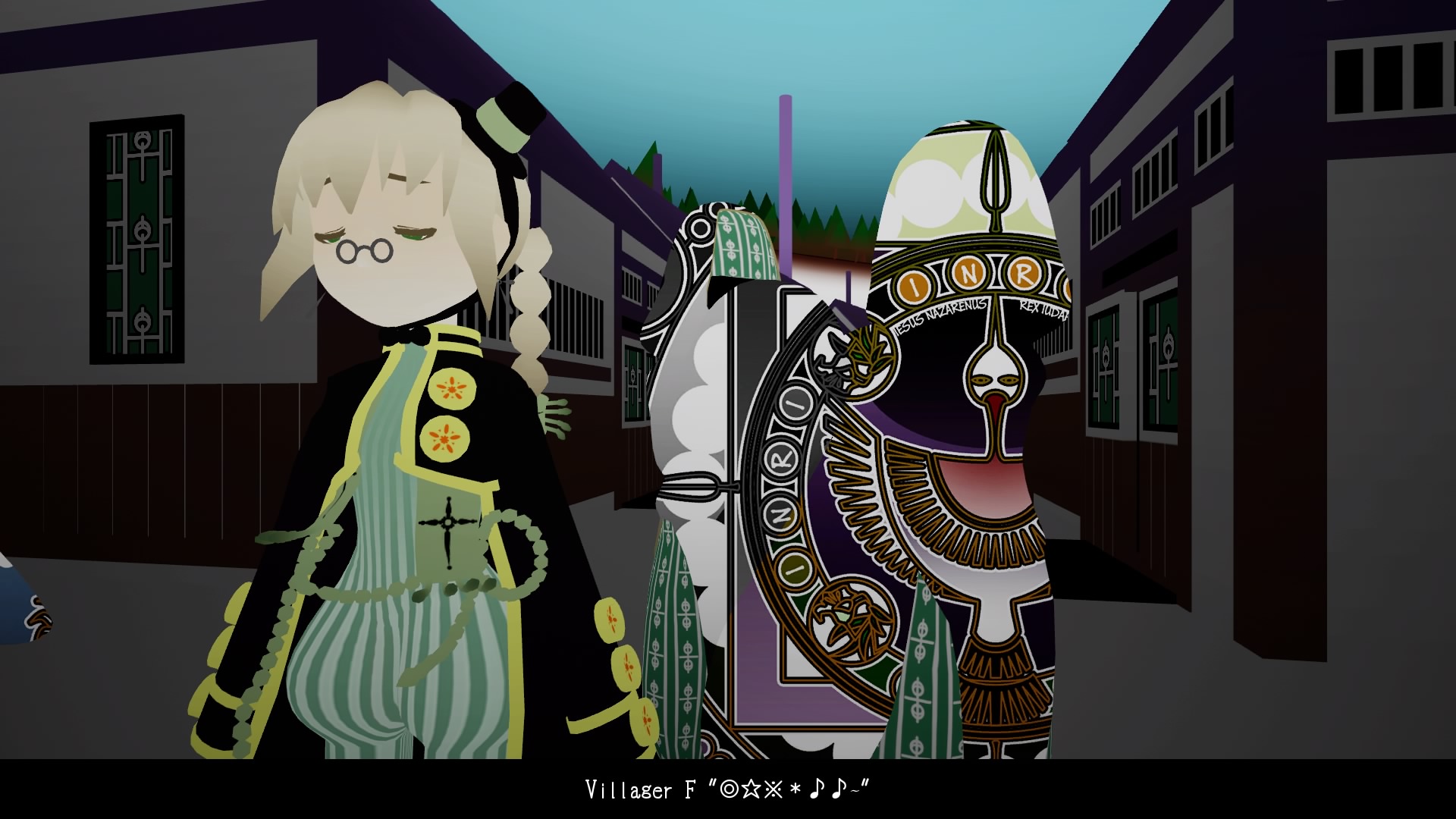
-
The Midnight Sanctuary_20180928181150
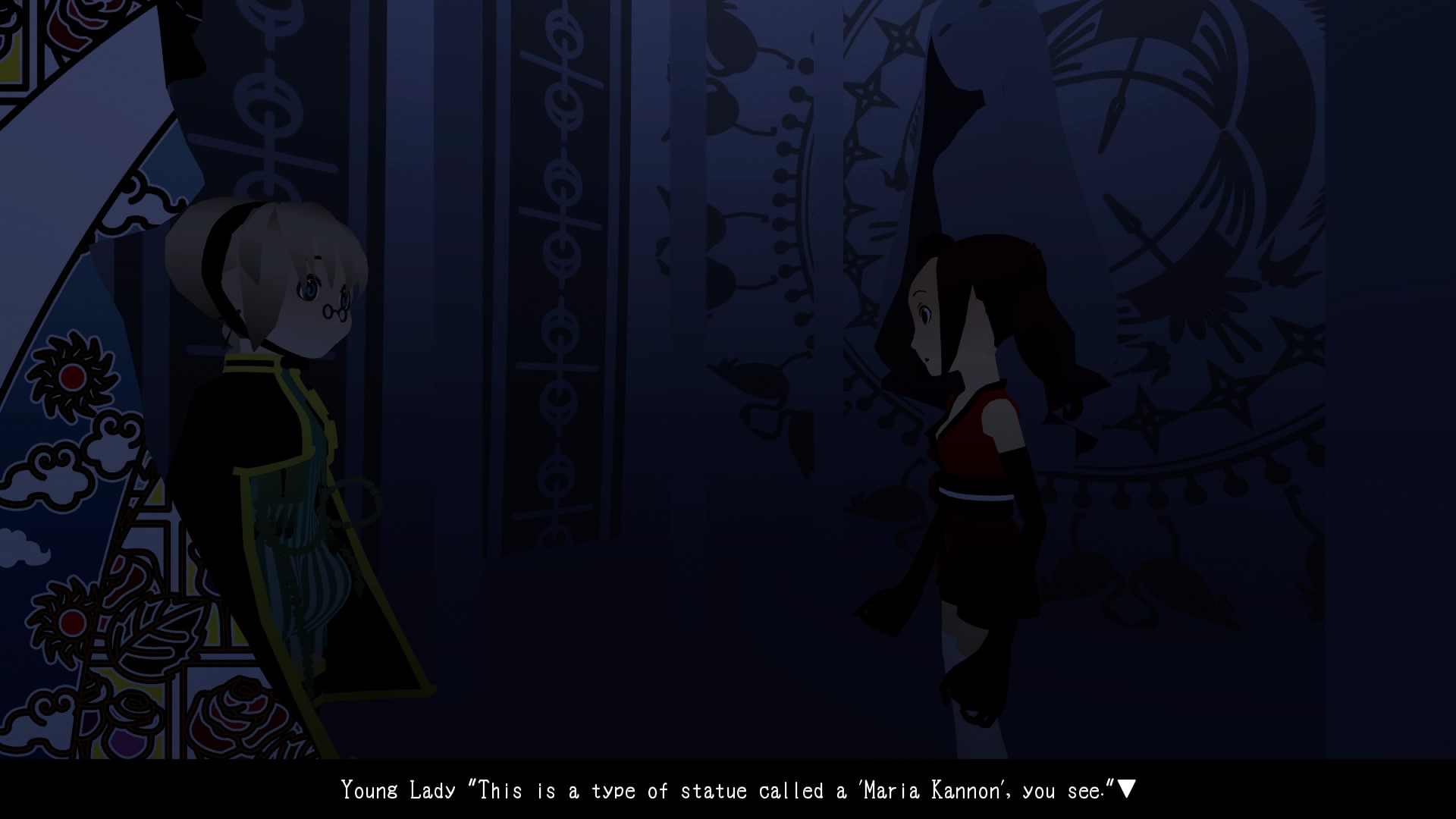
-
The Midnight Sanctuary_20180928181227
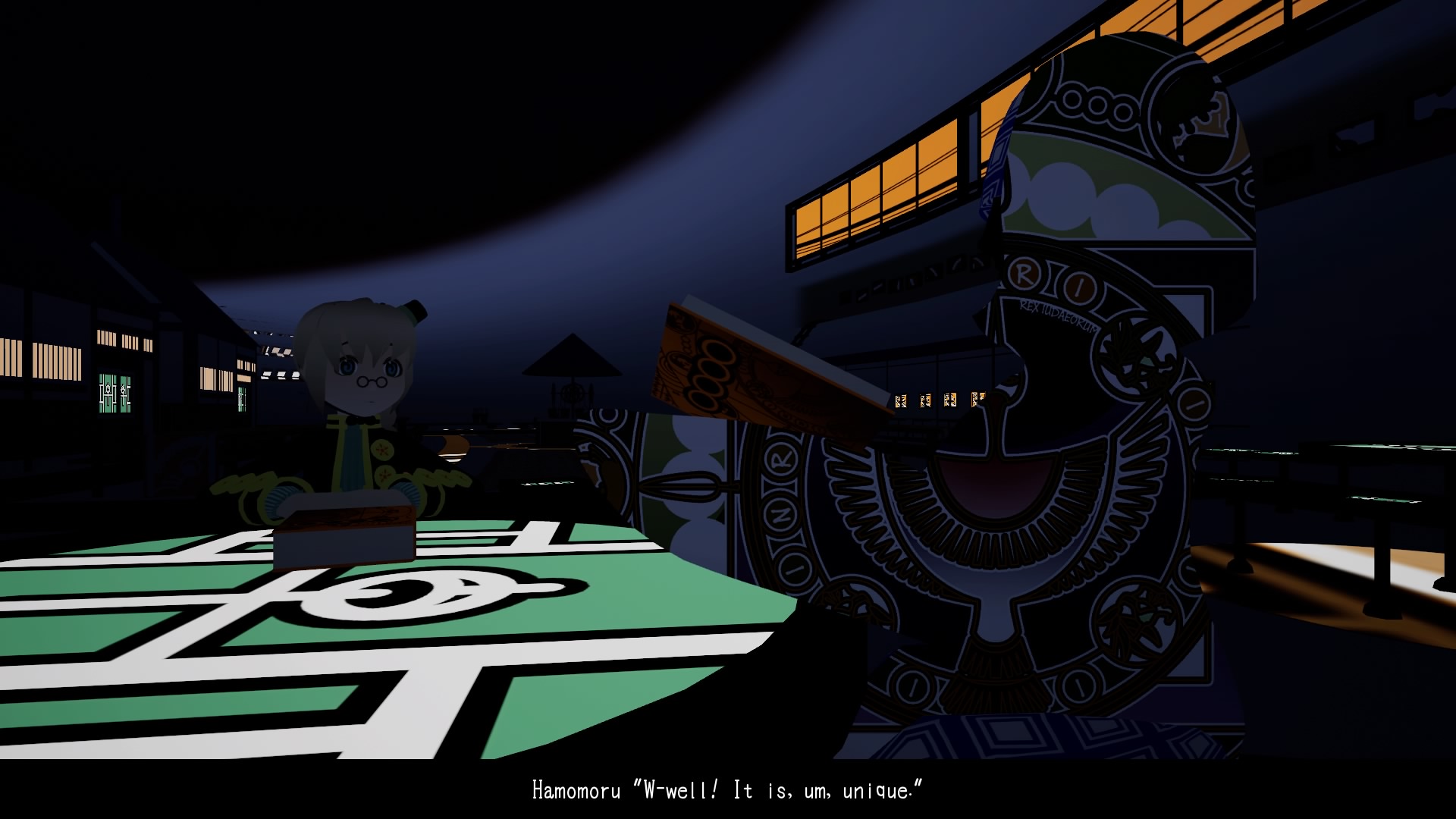
-
The Midnight Sanctuary_20180928181808
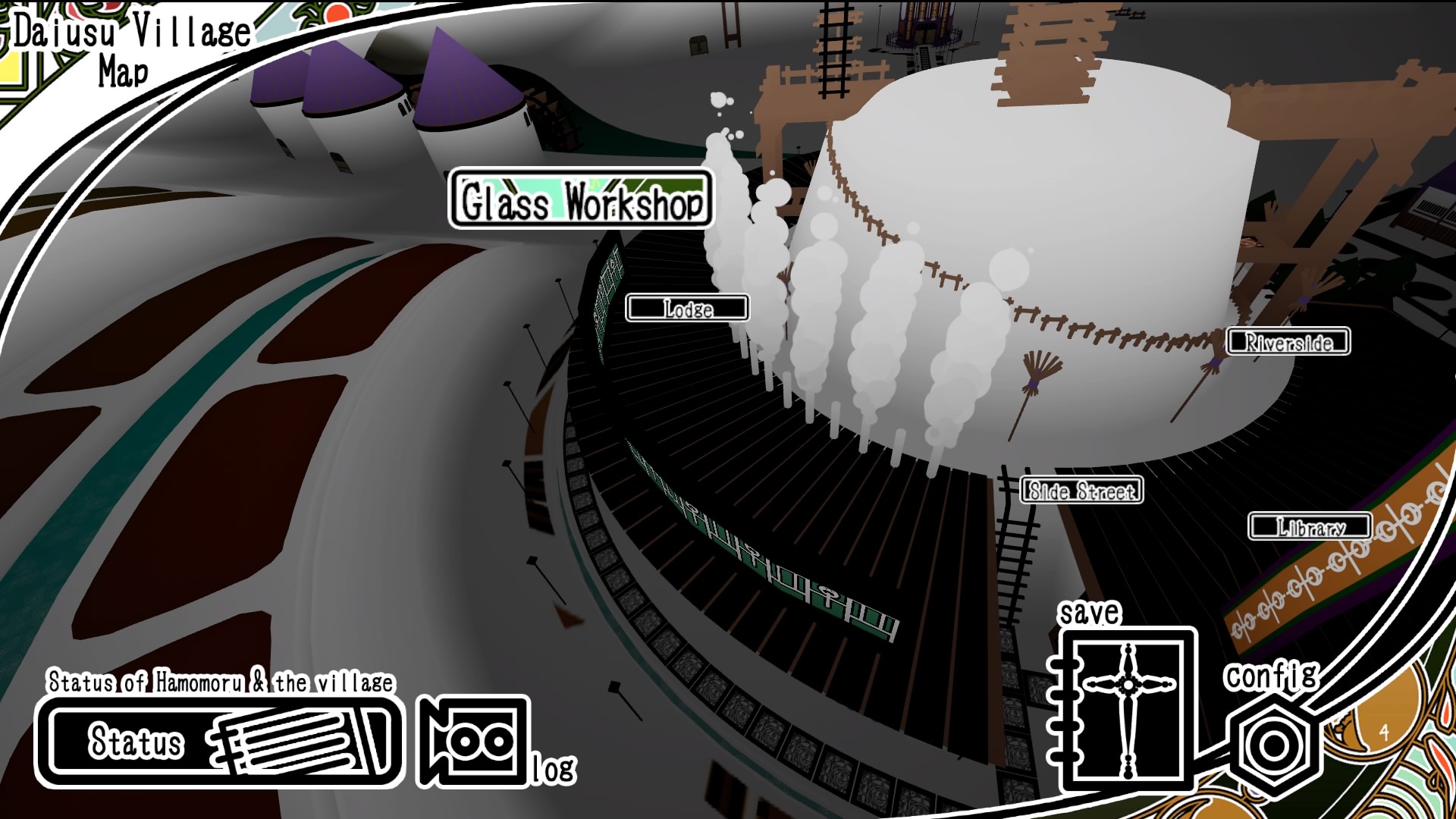
-
The Midnight Sanctuary_20180928181846
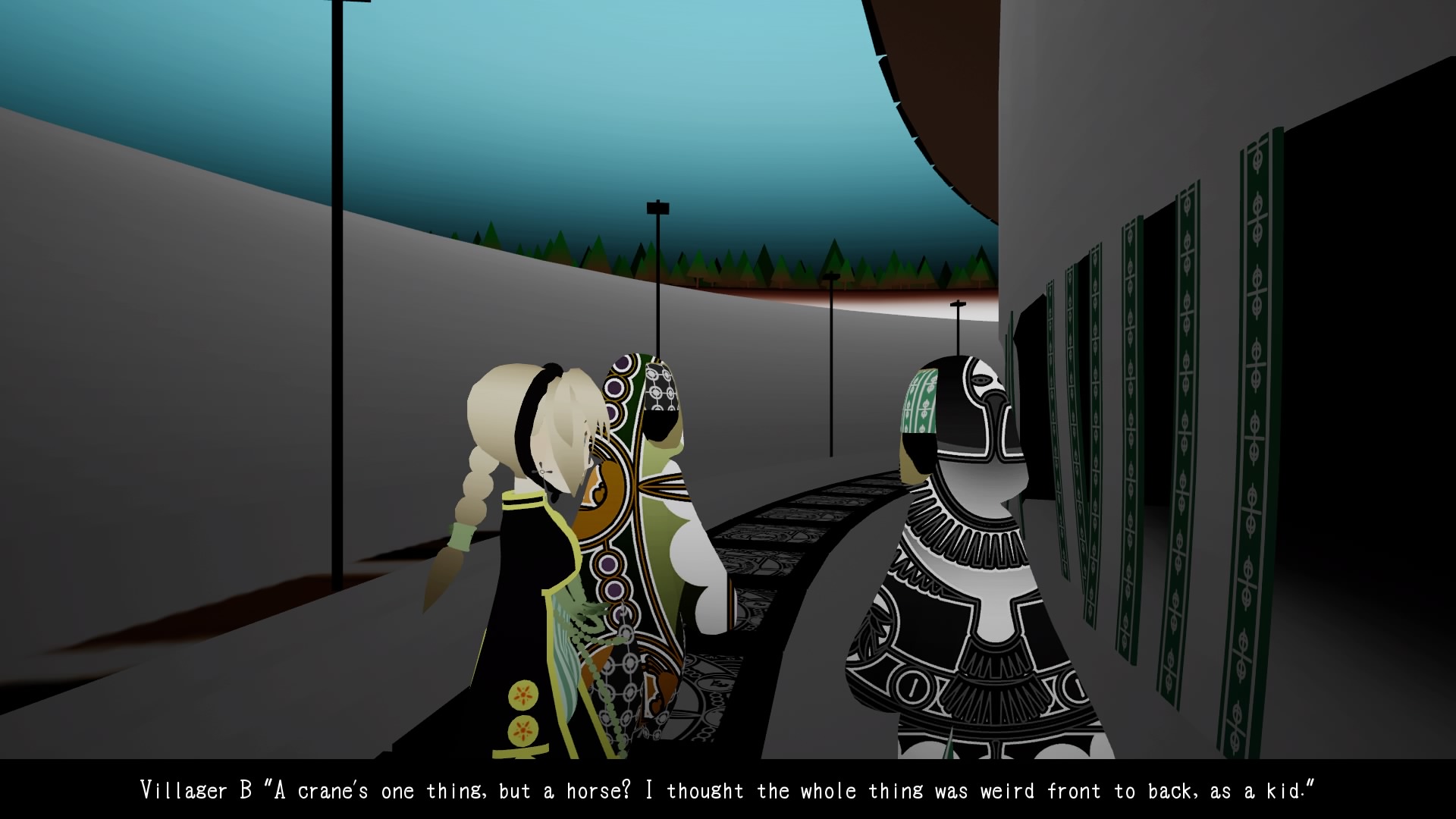
-
The Midnight Sanctuary_20180928182025
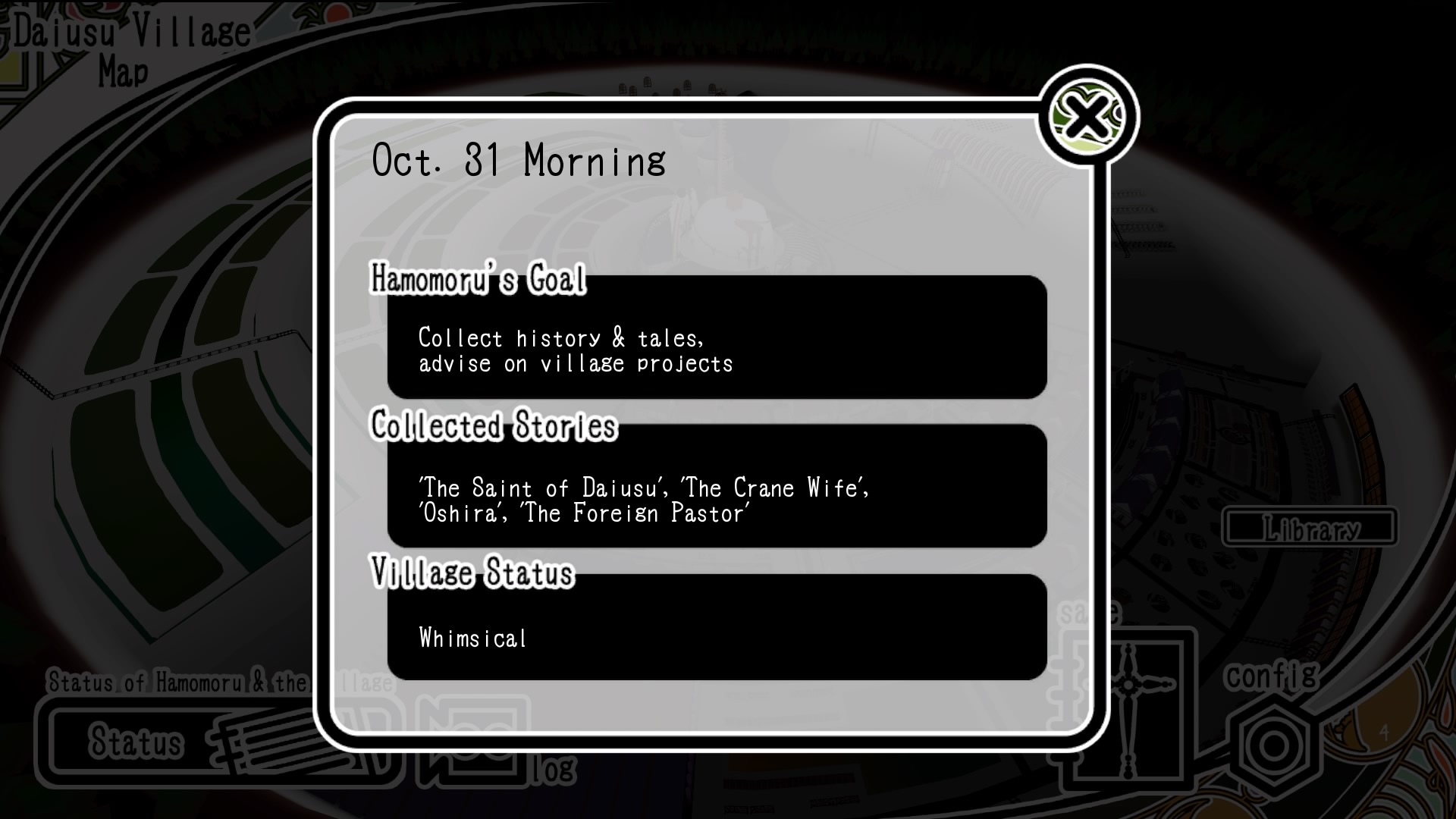
-
The Midnight Sanctuary_20180928182153
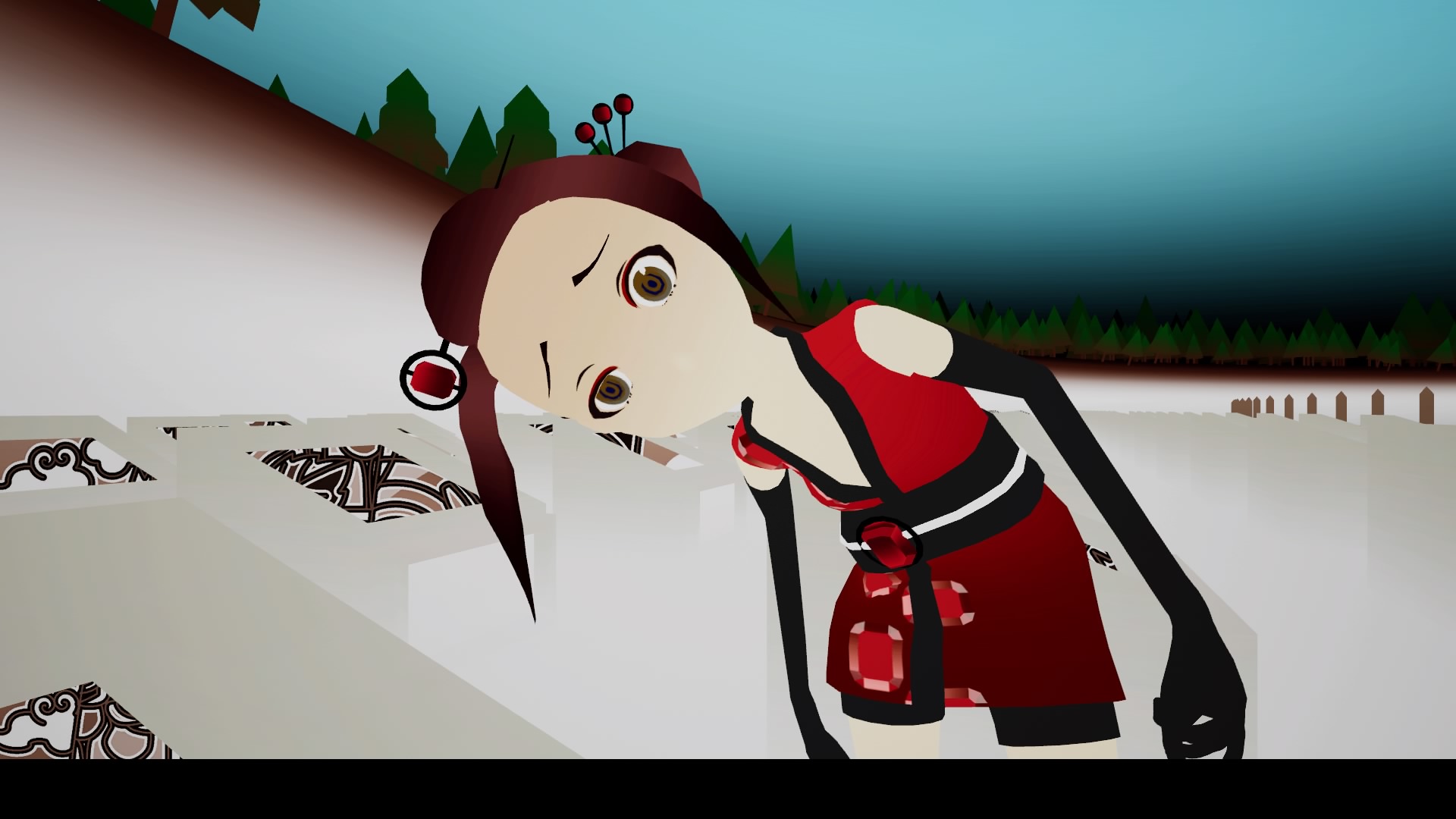
-
The Midnight Sanctuary_20180928182248
